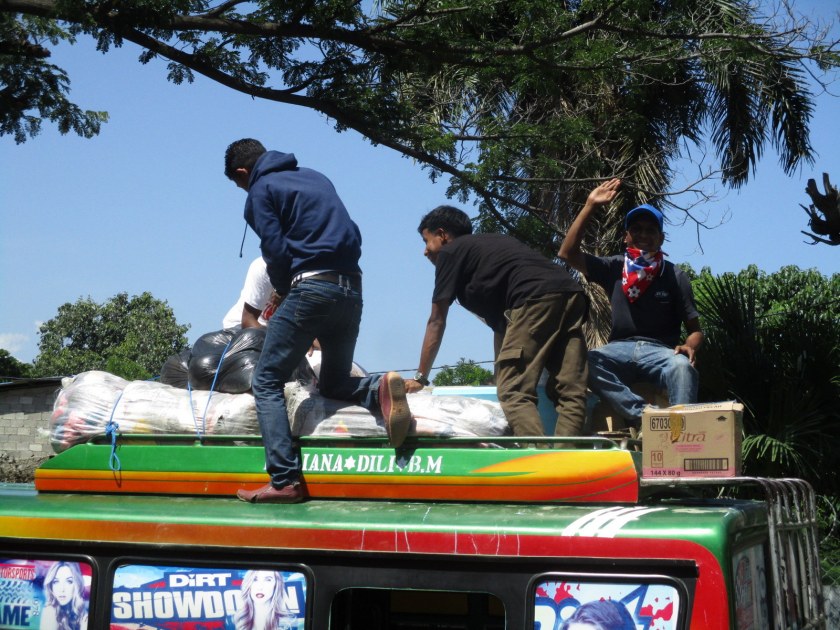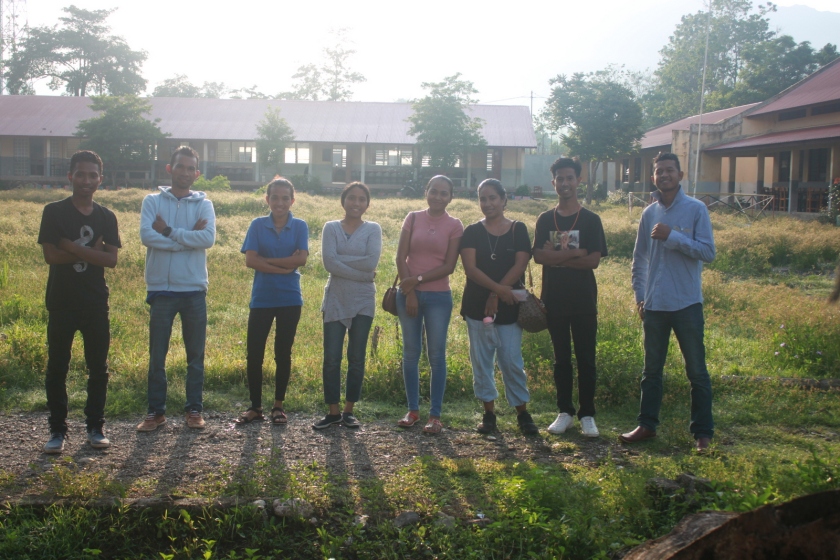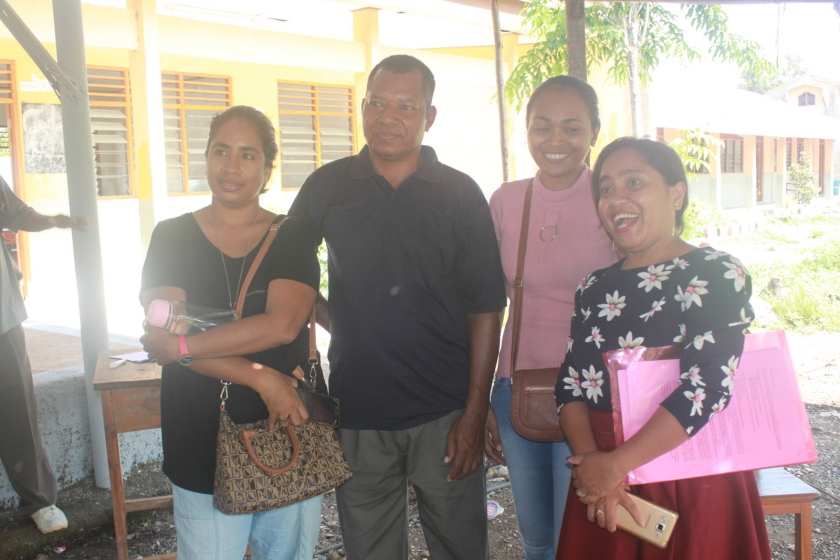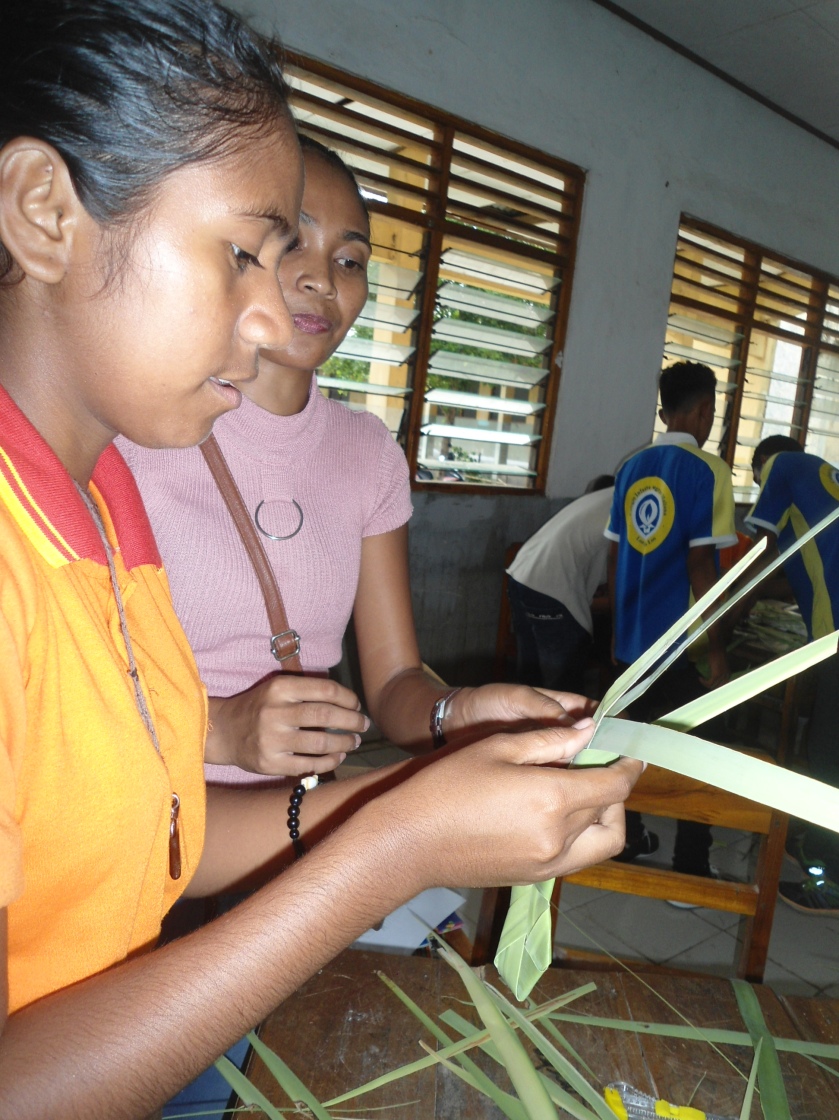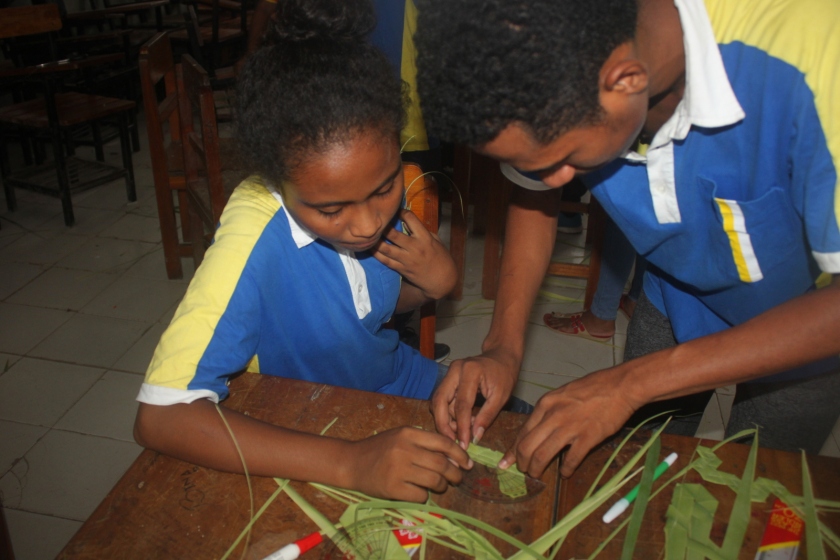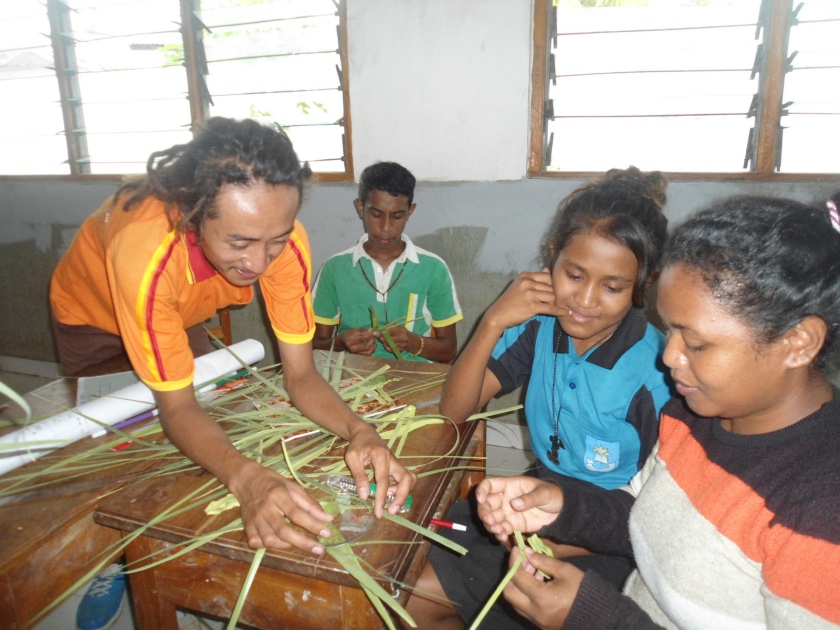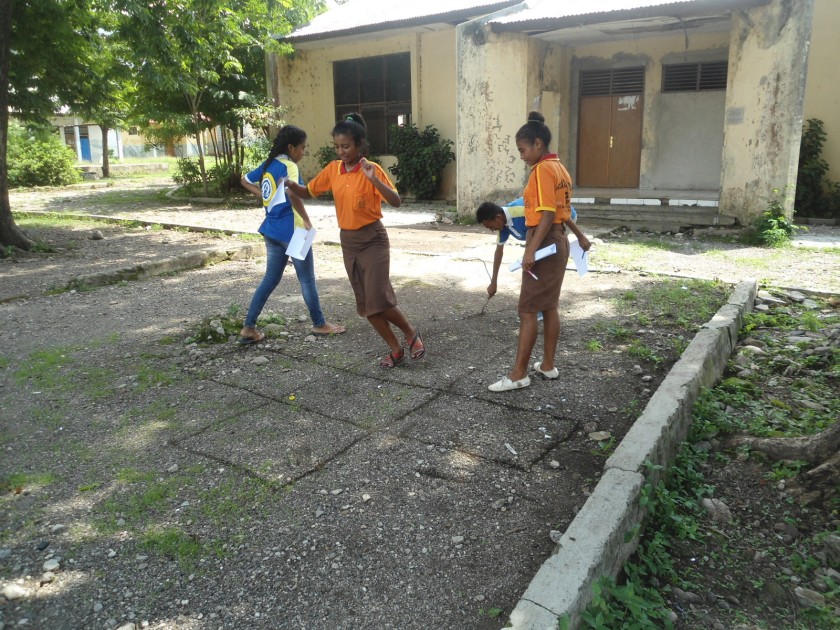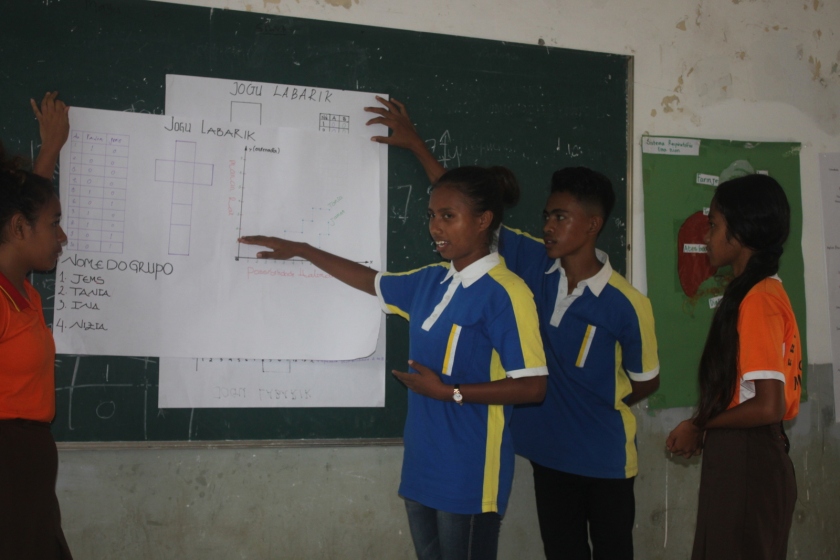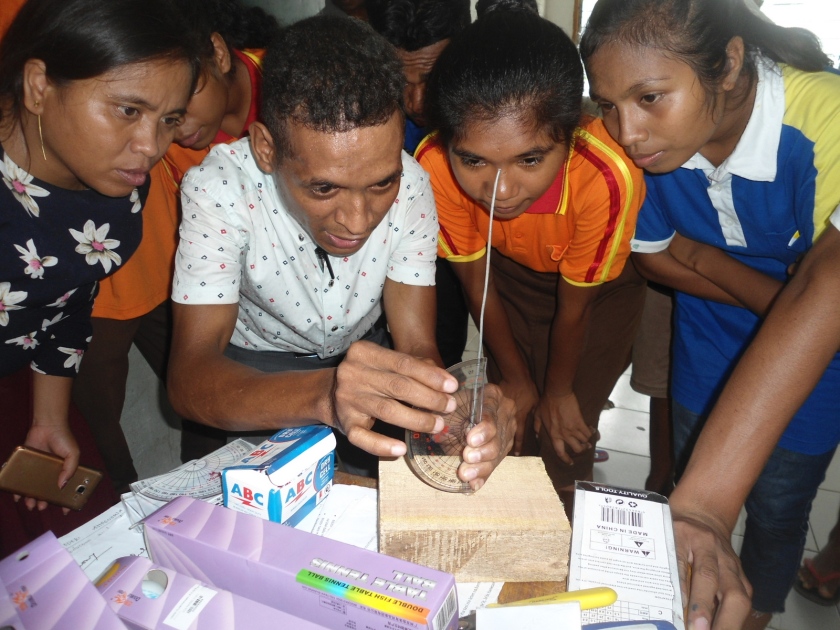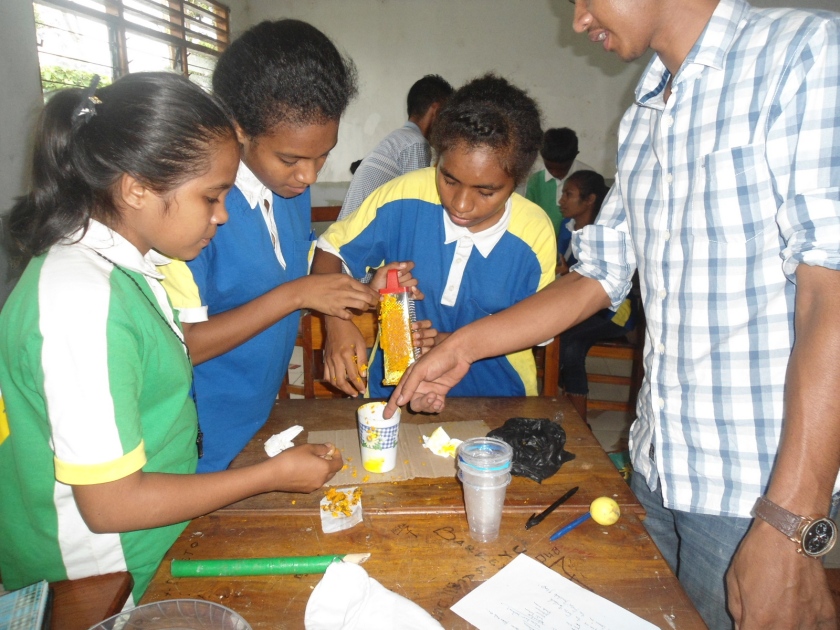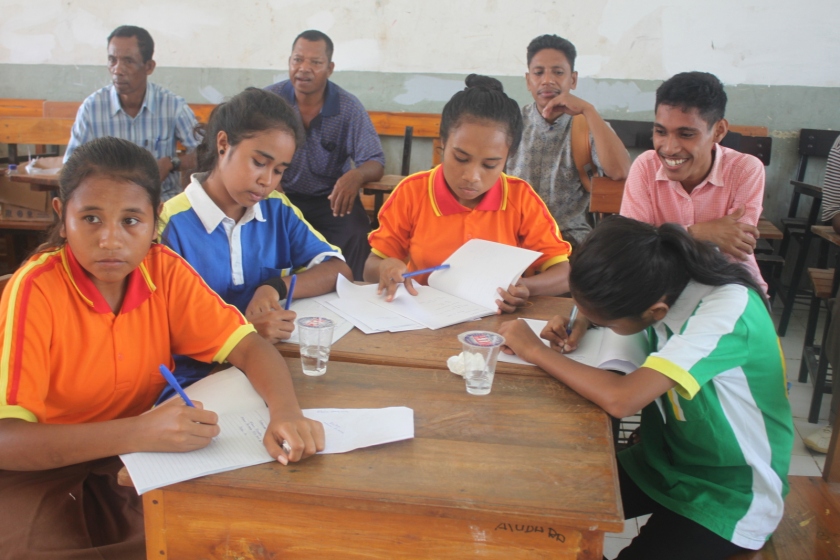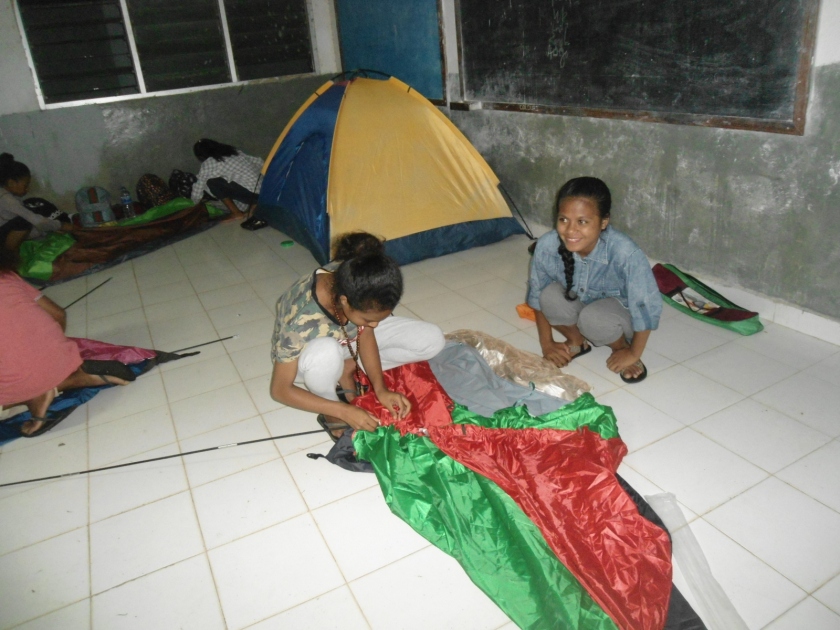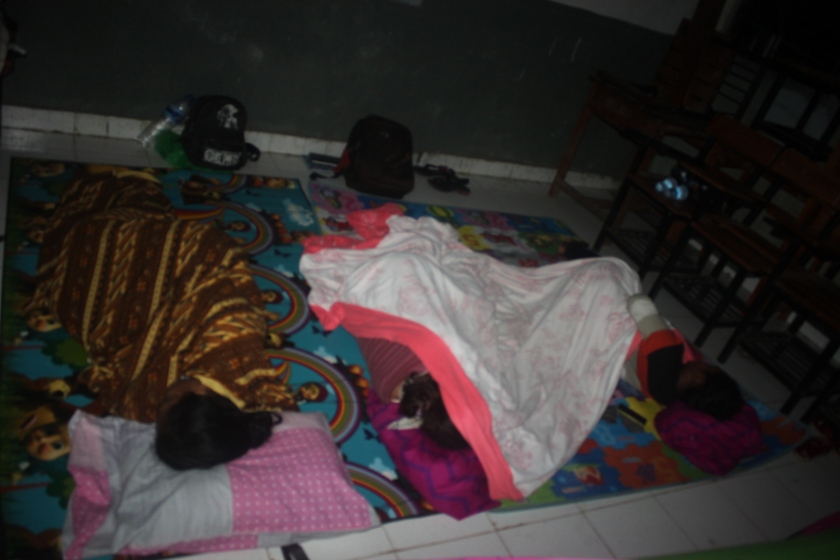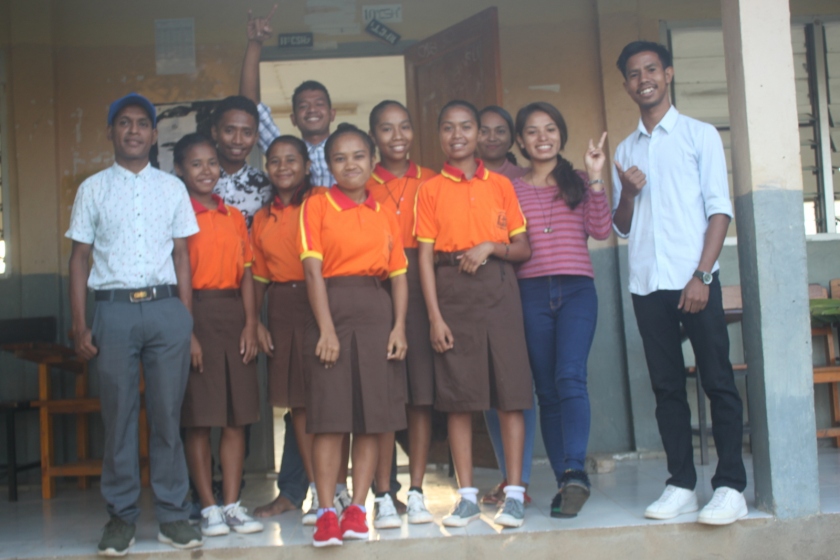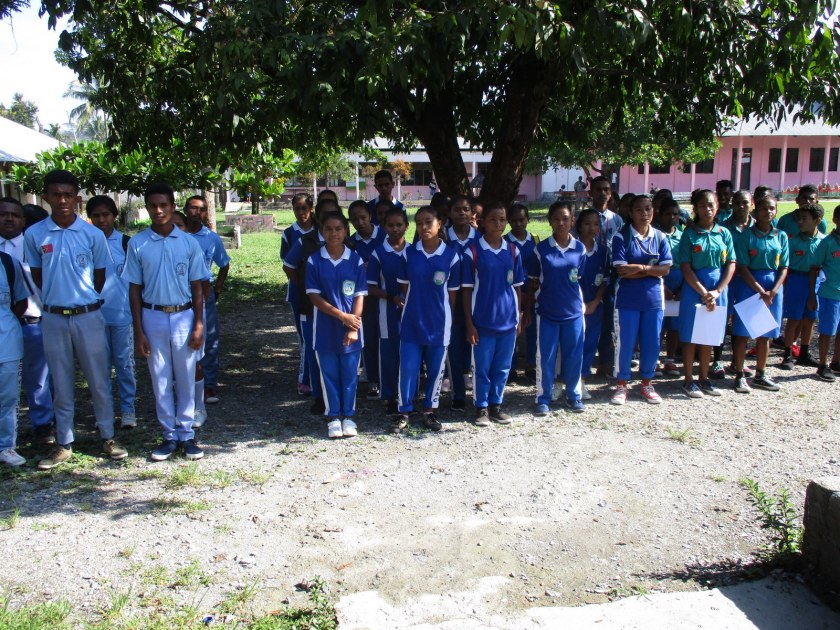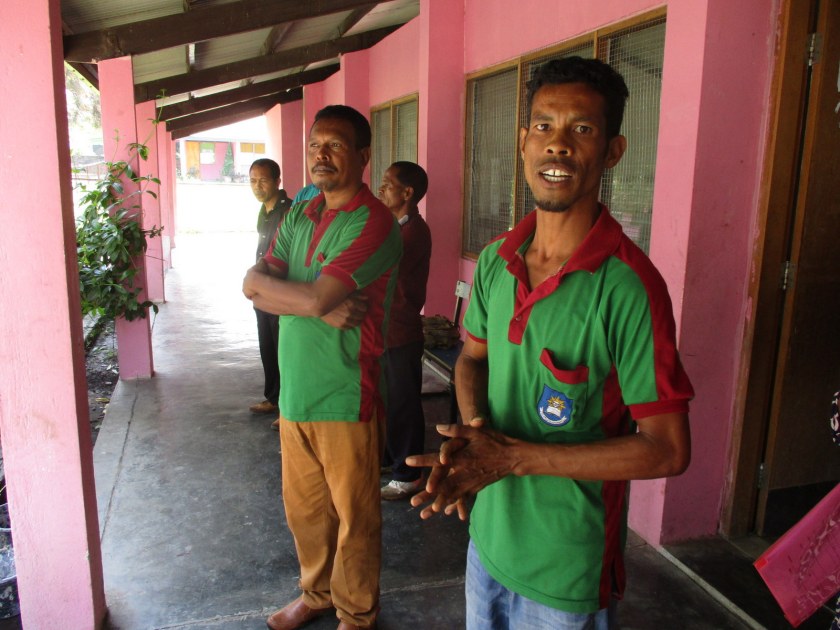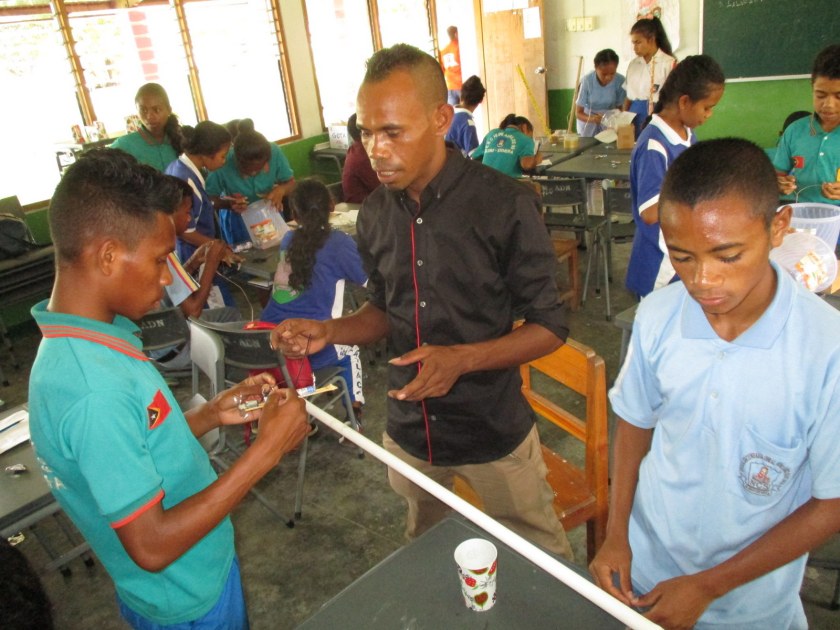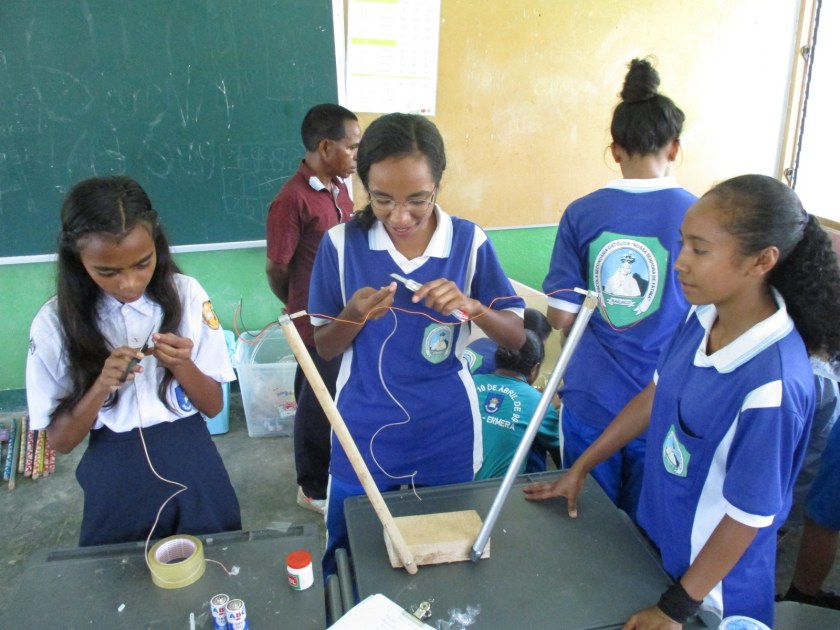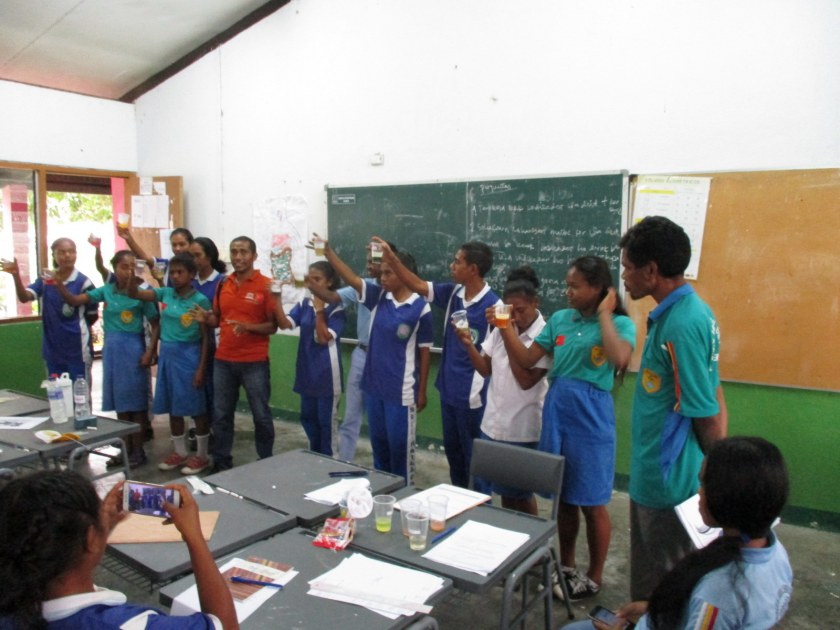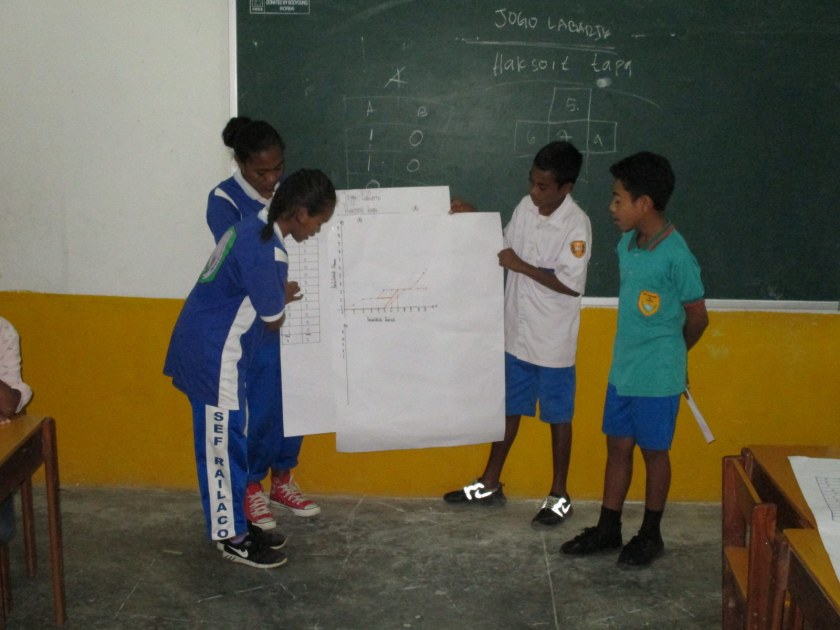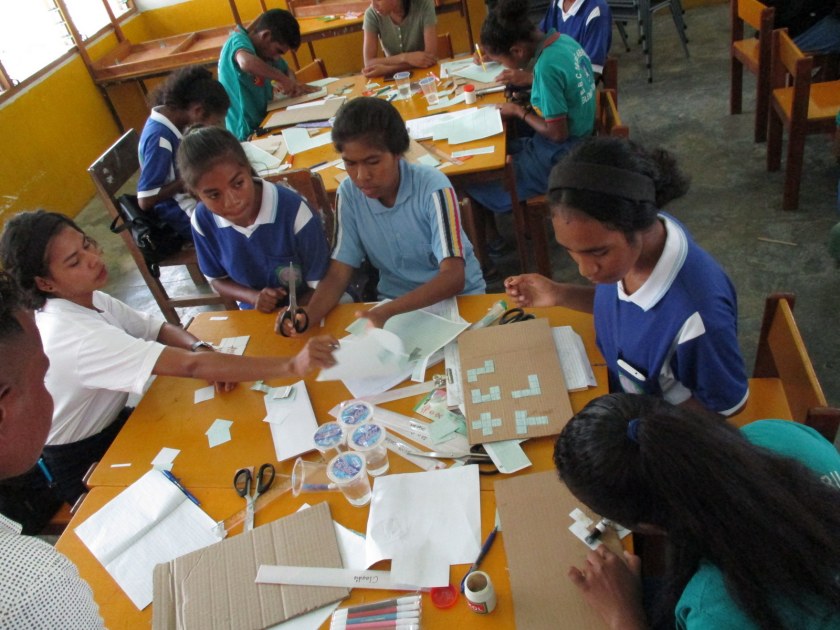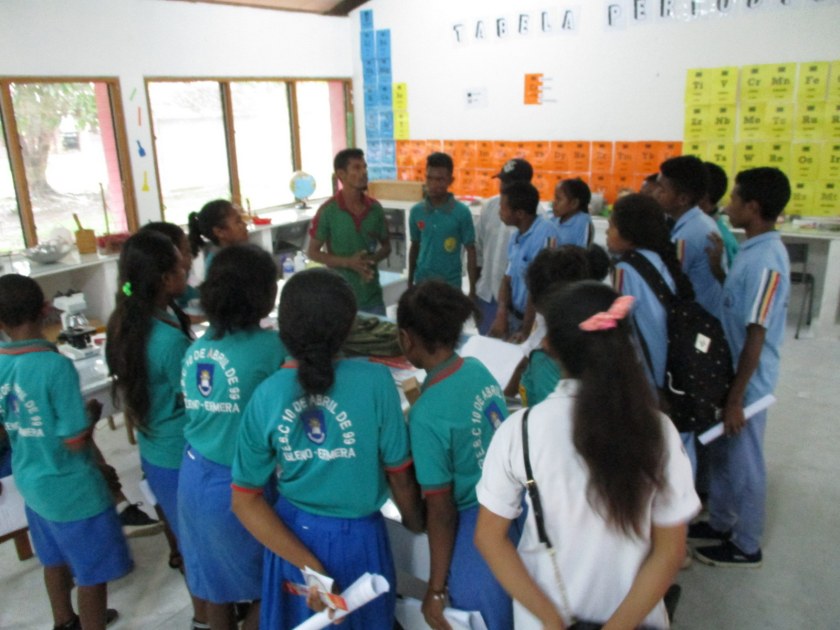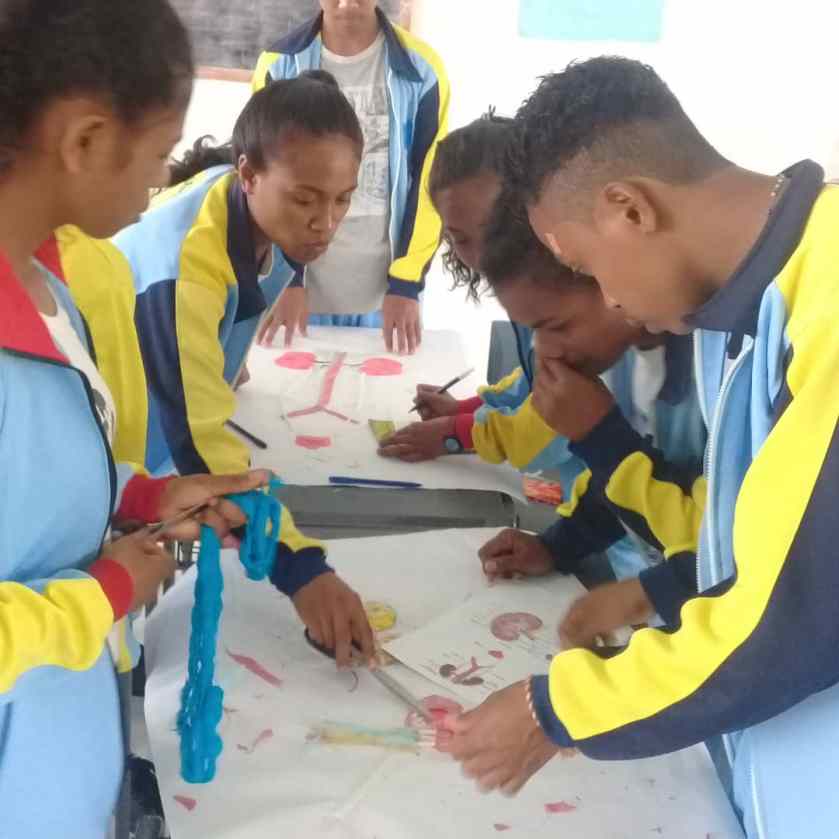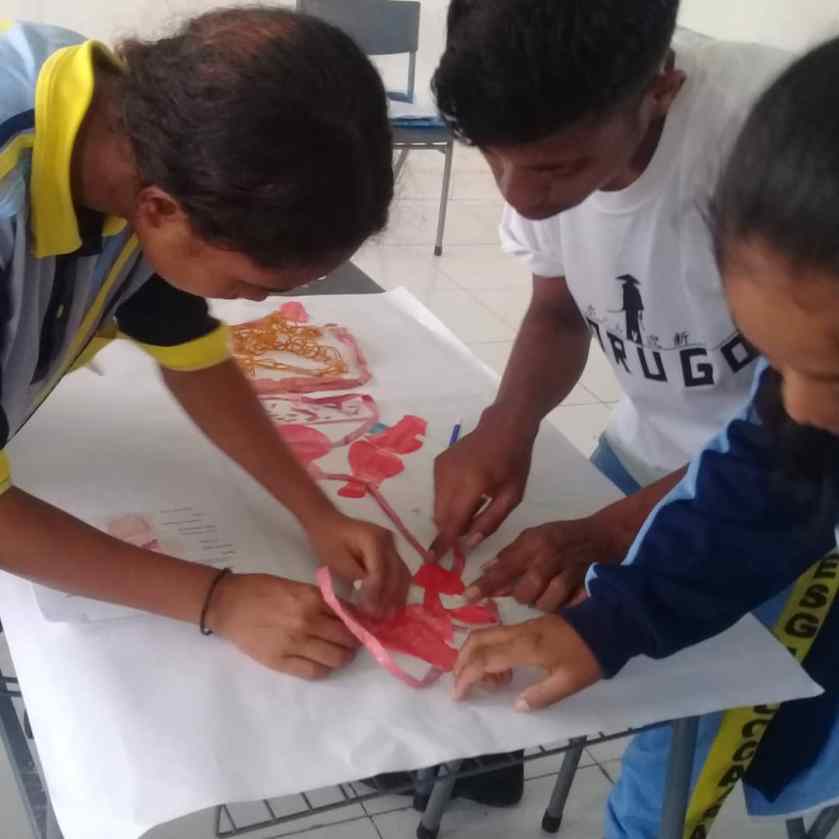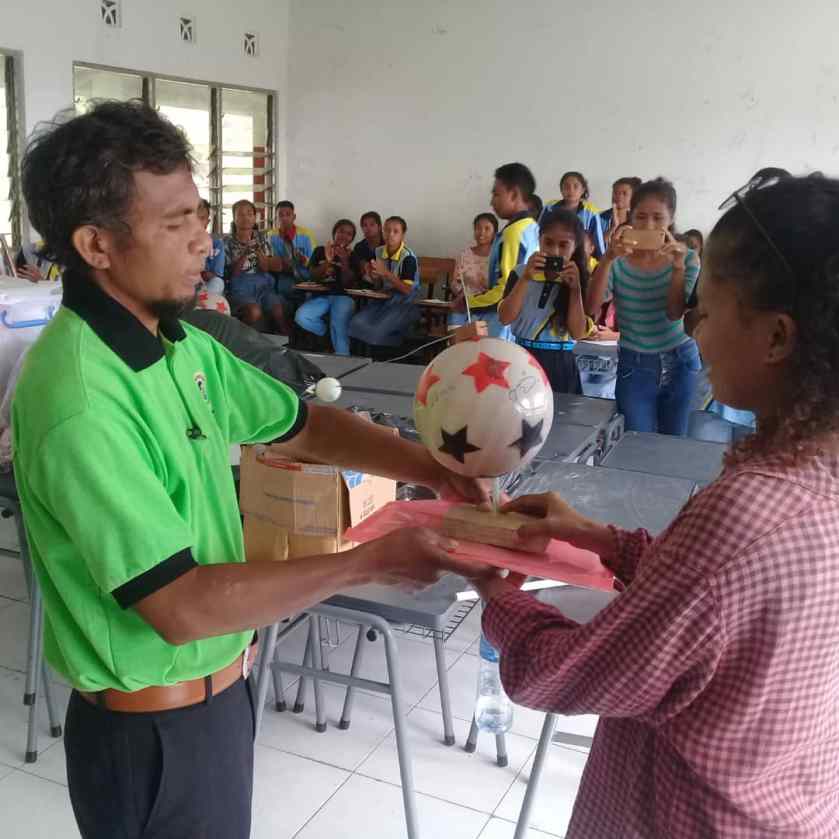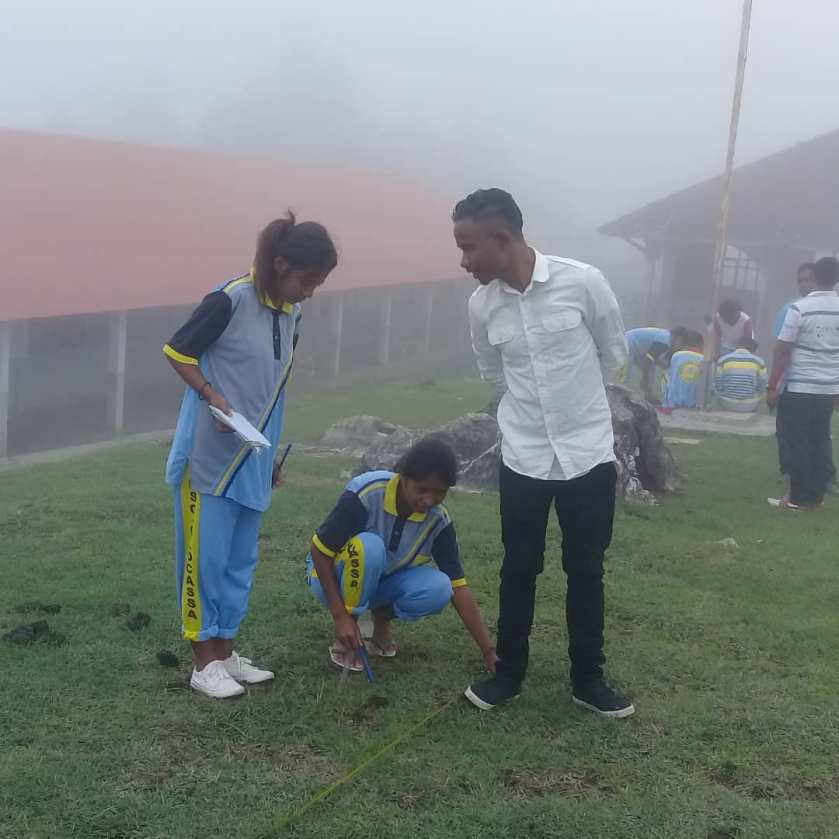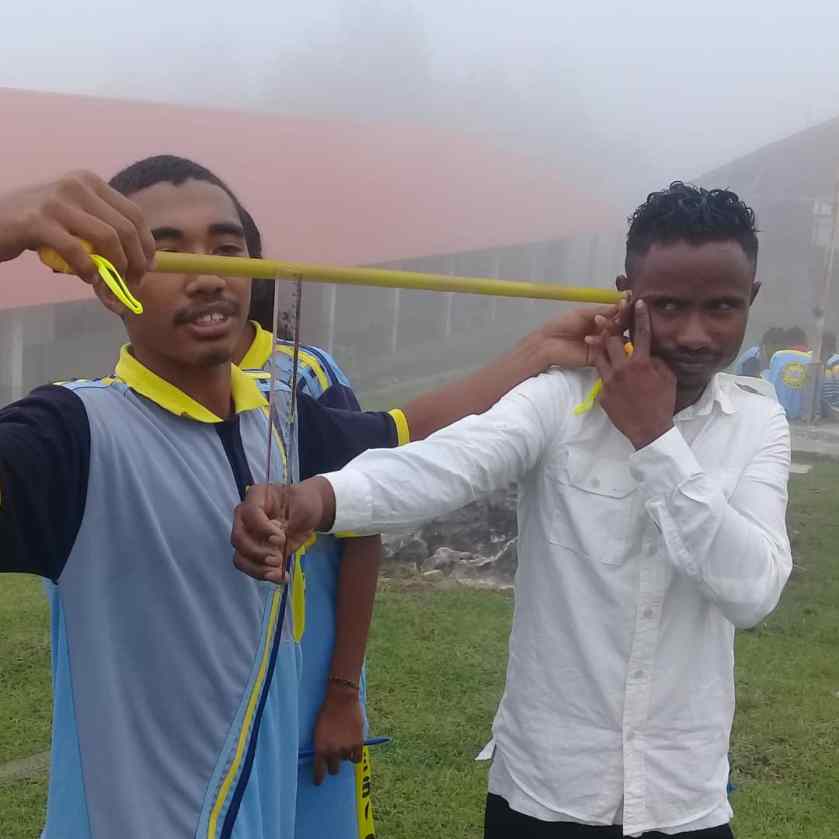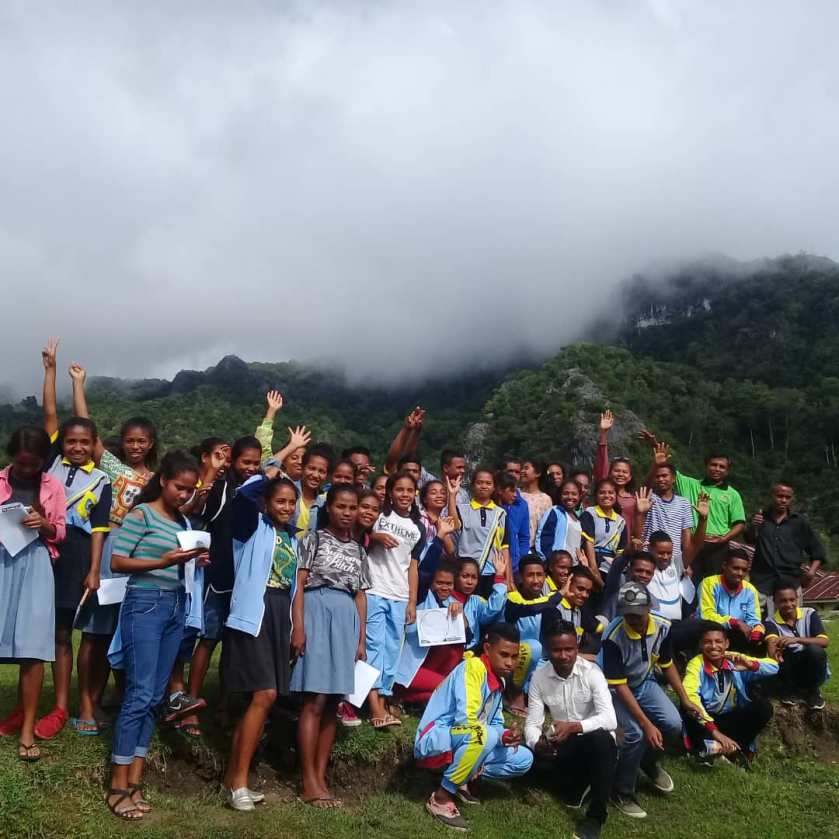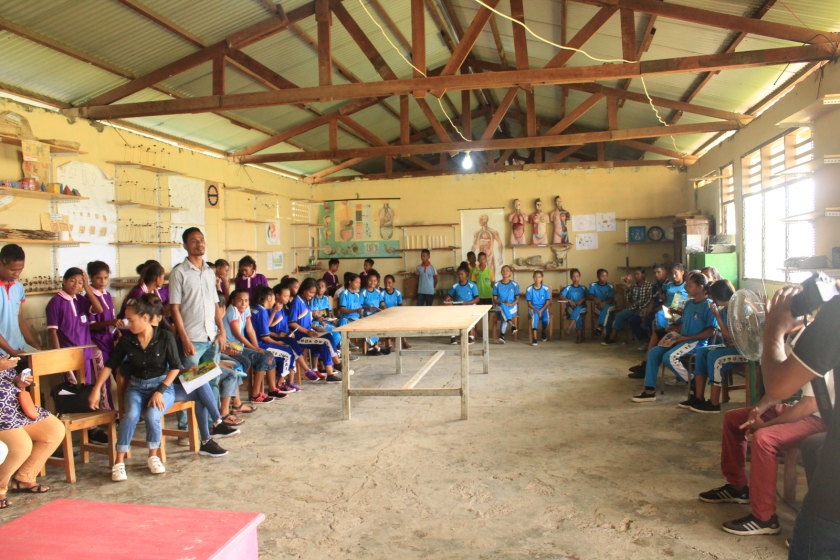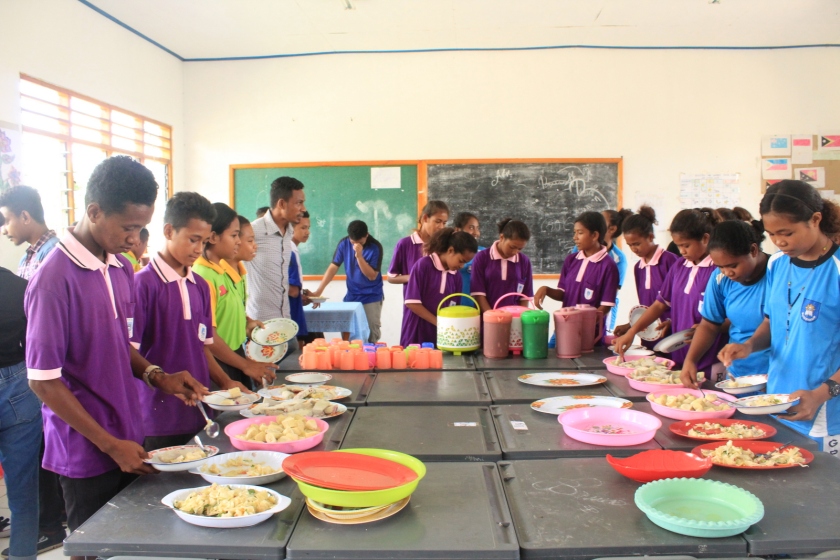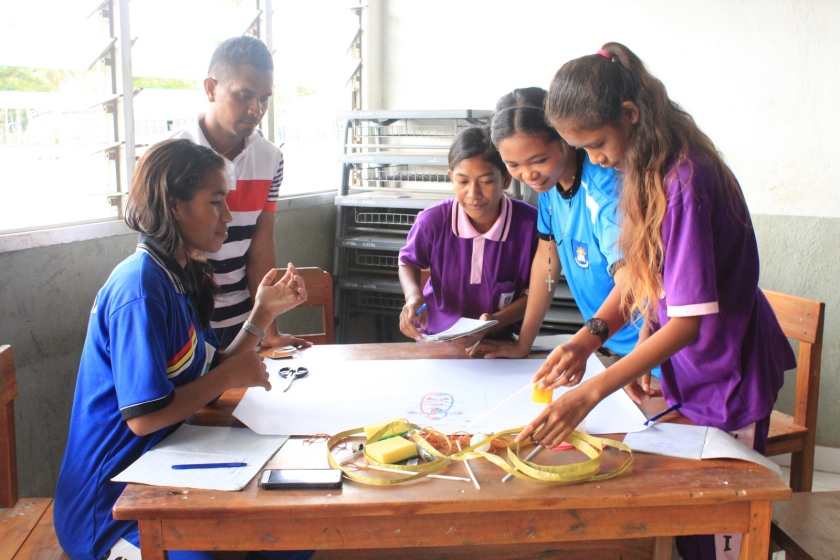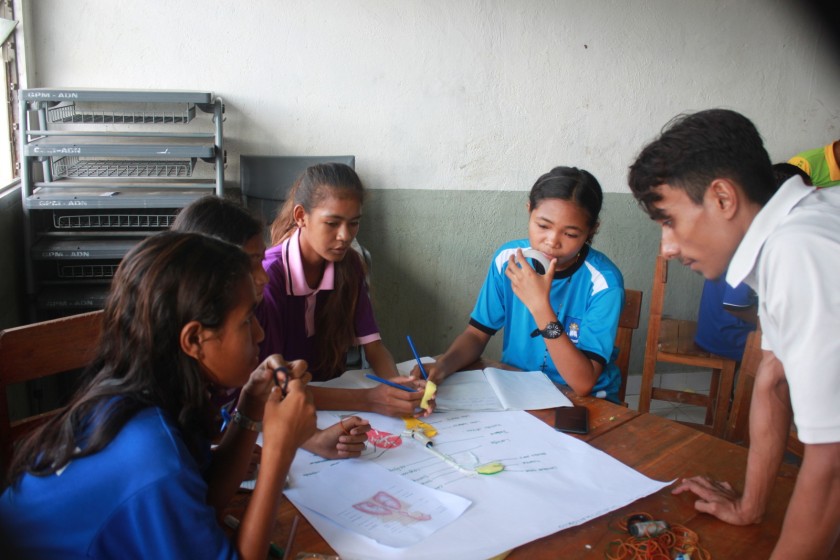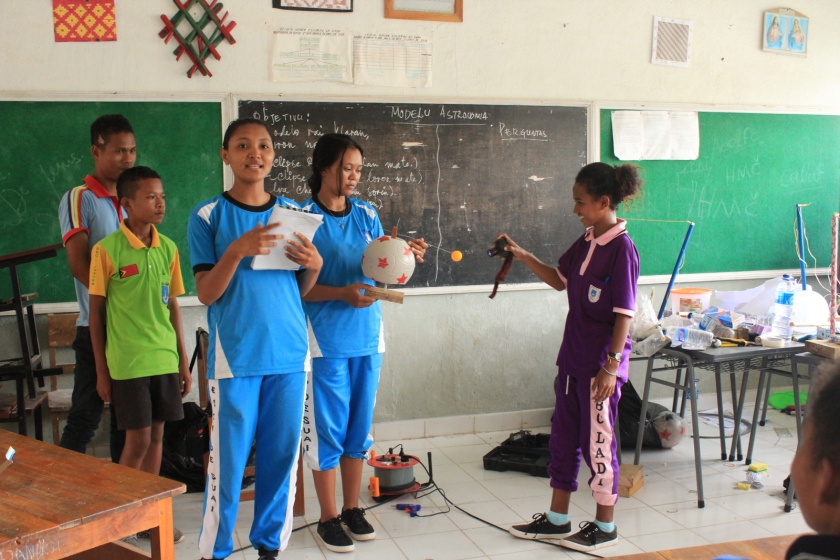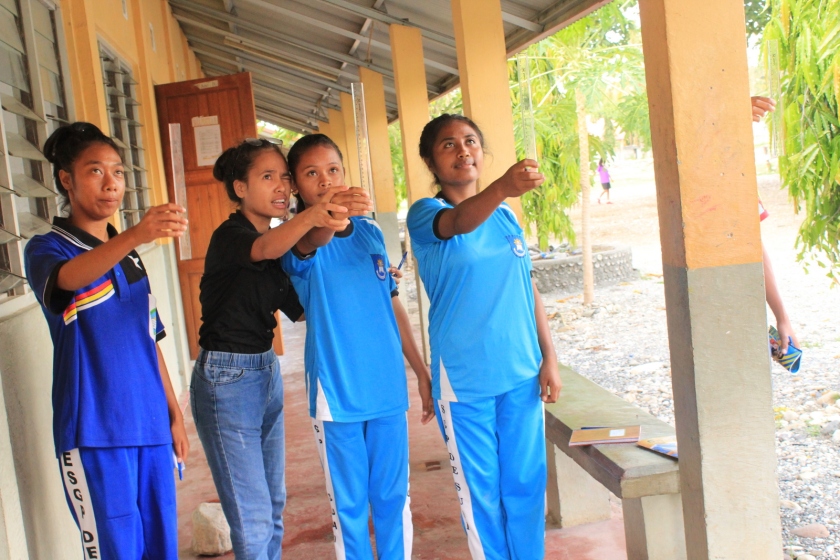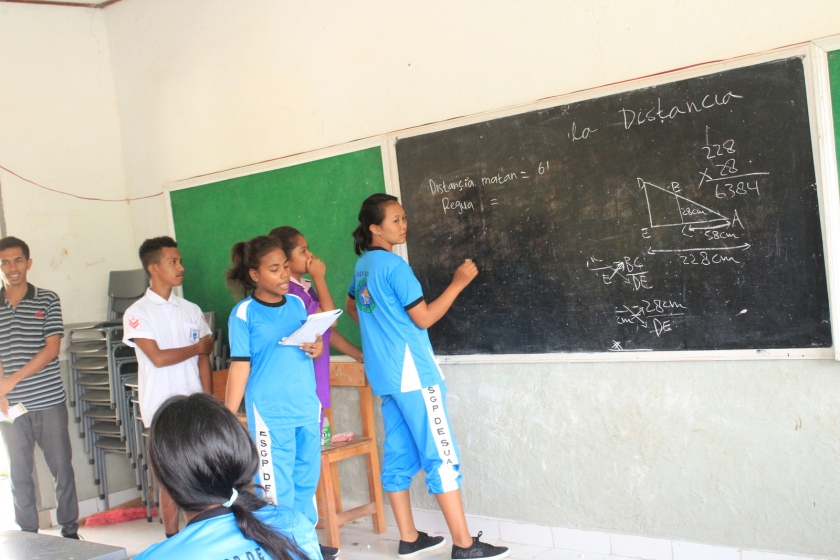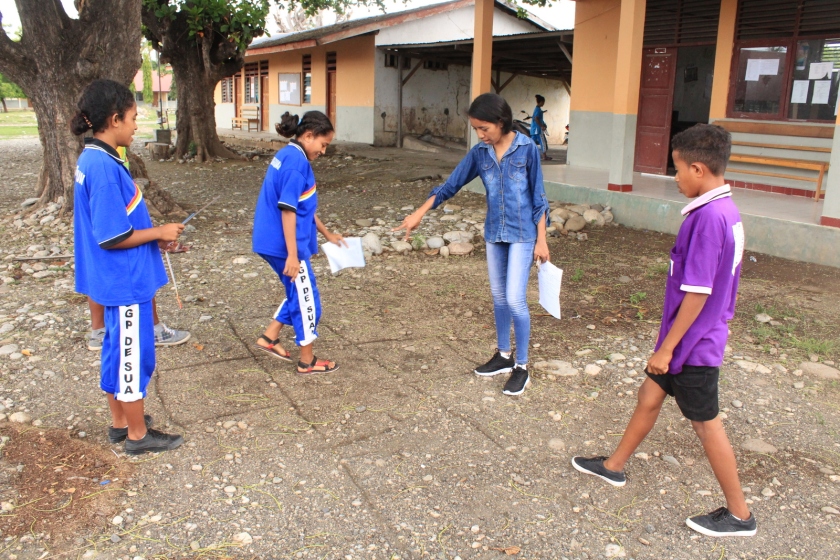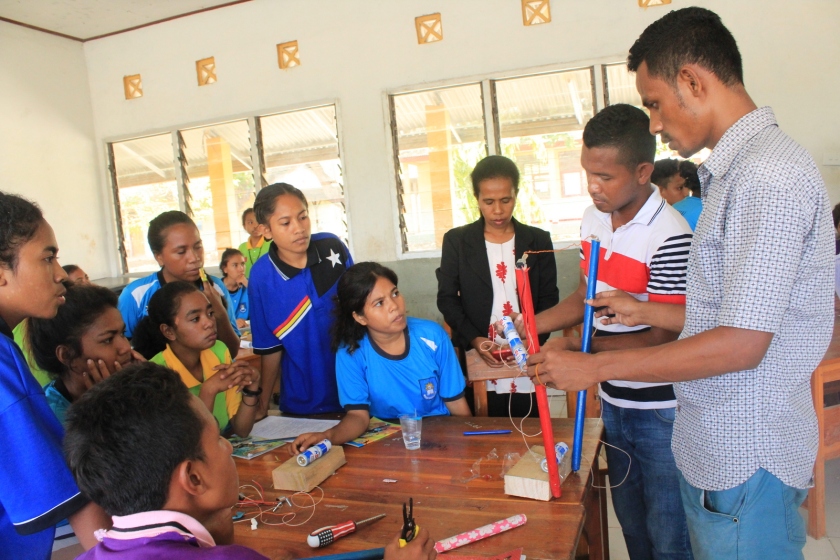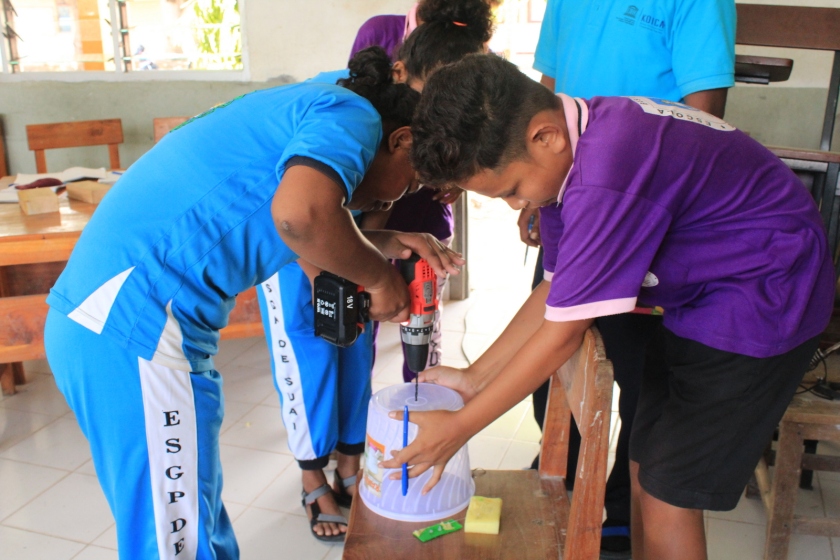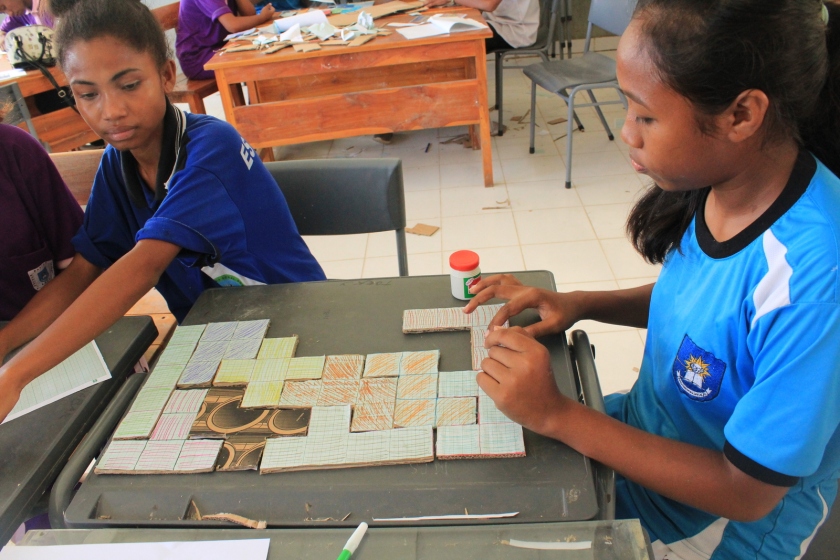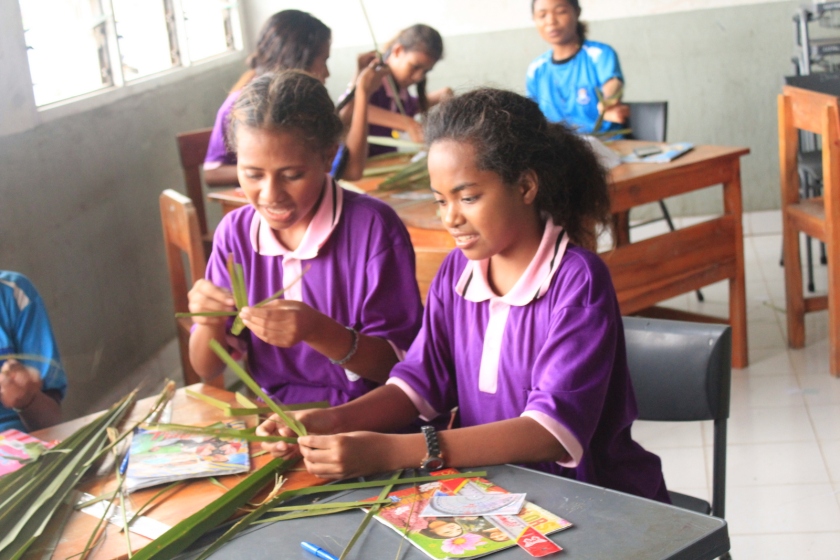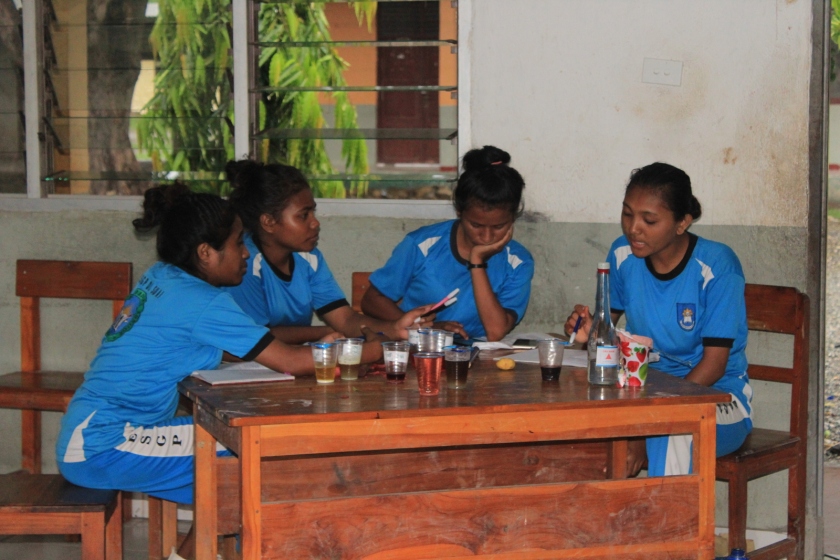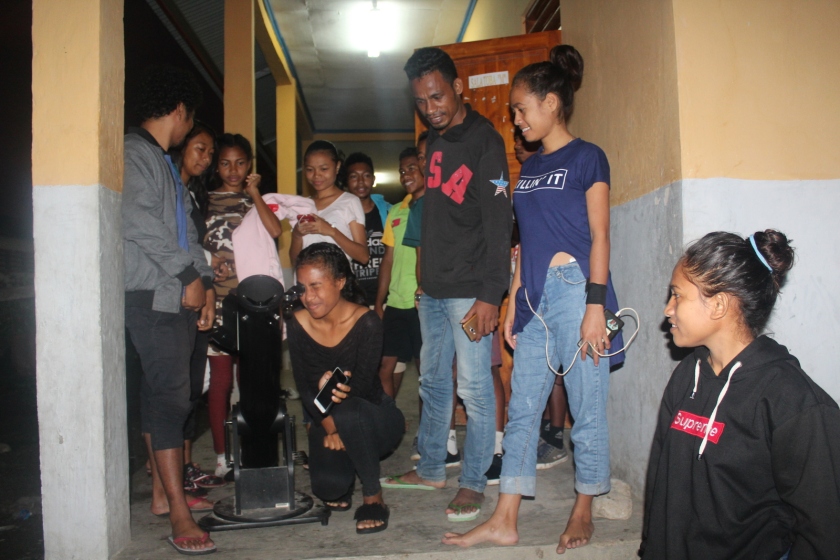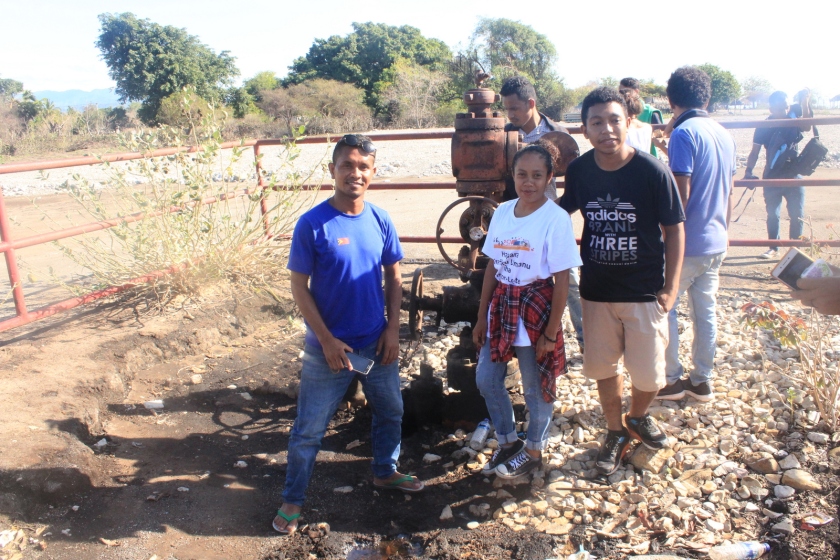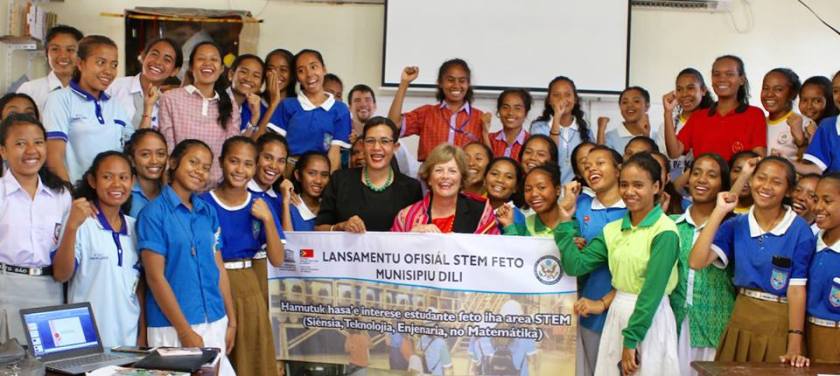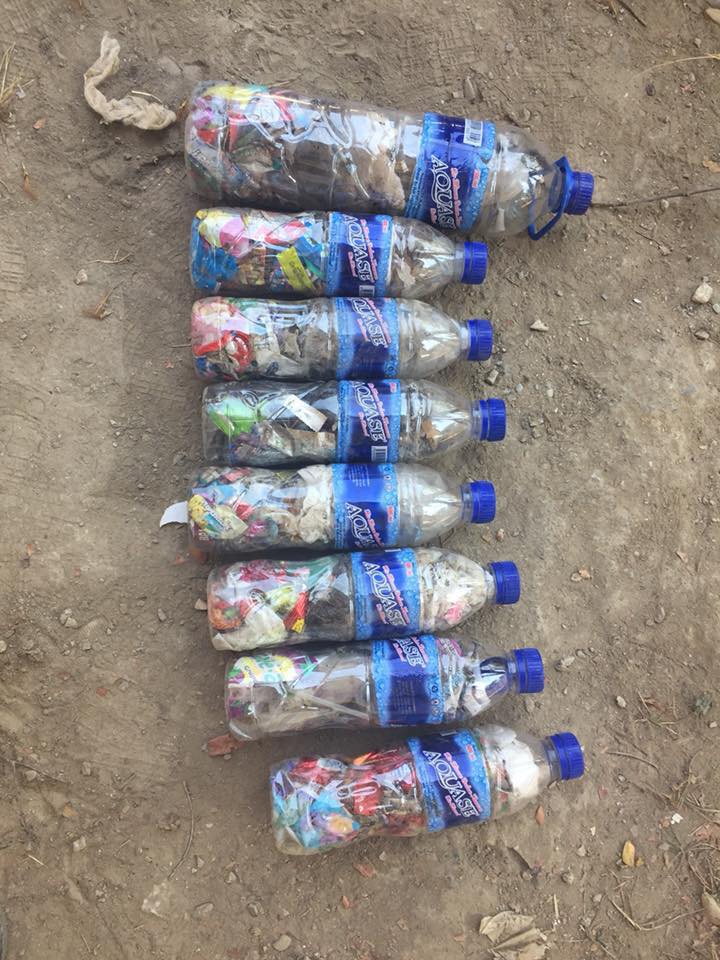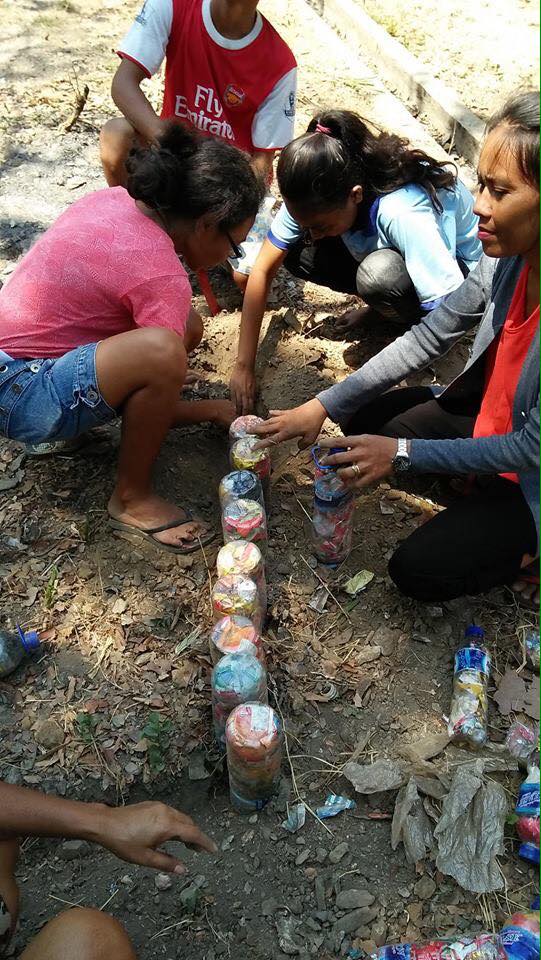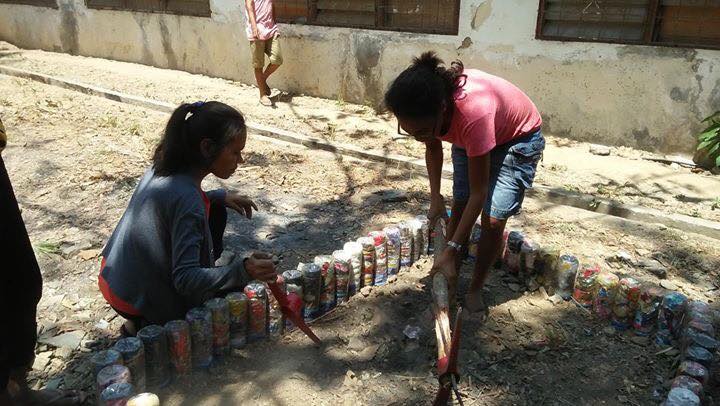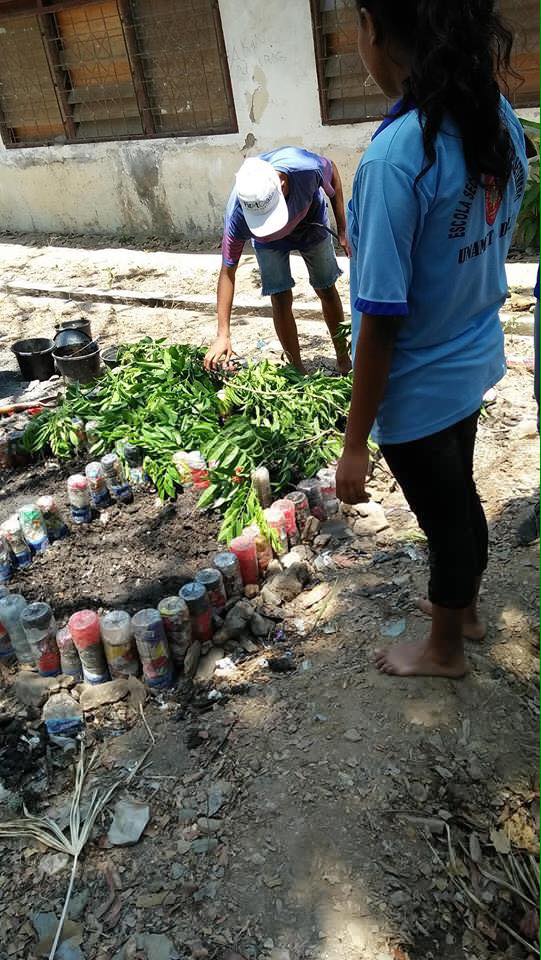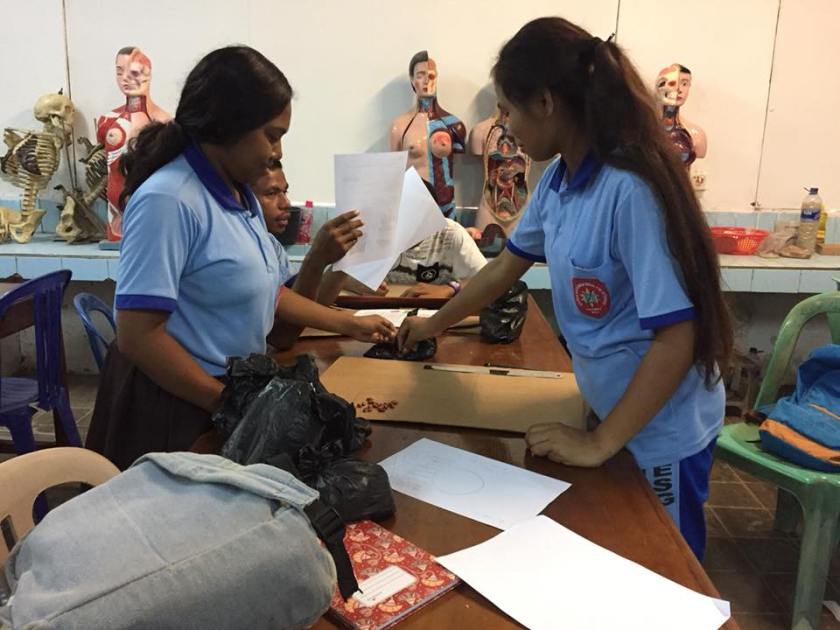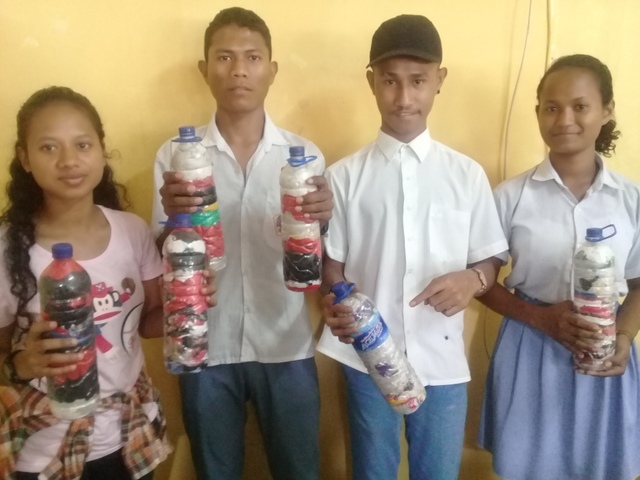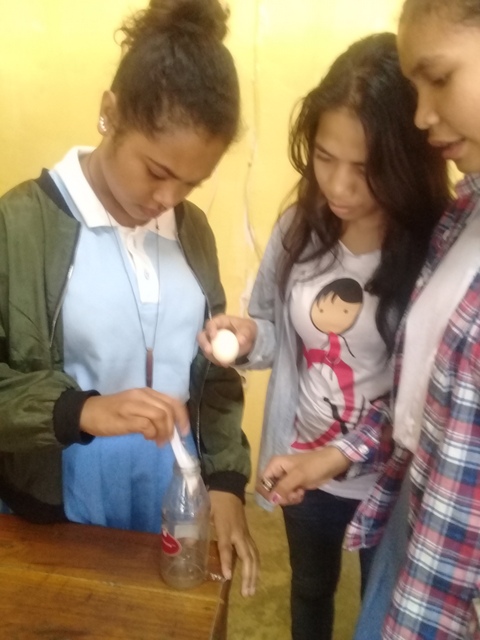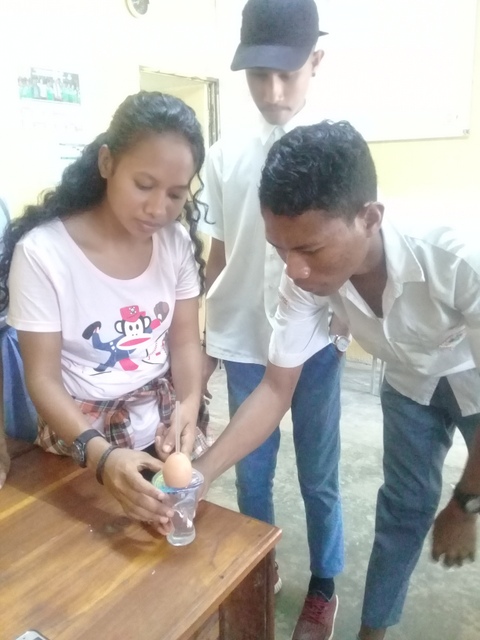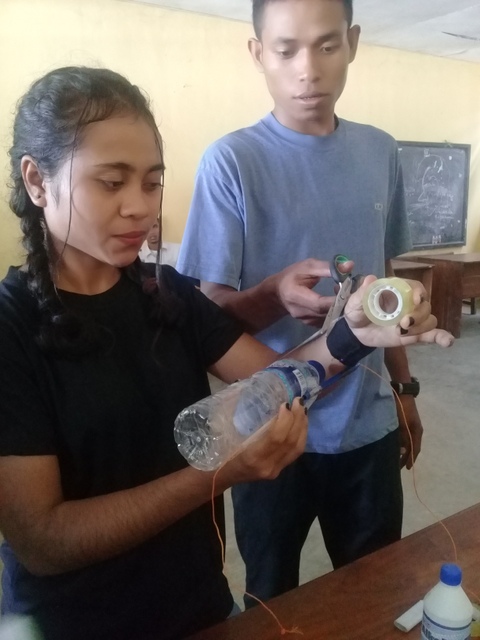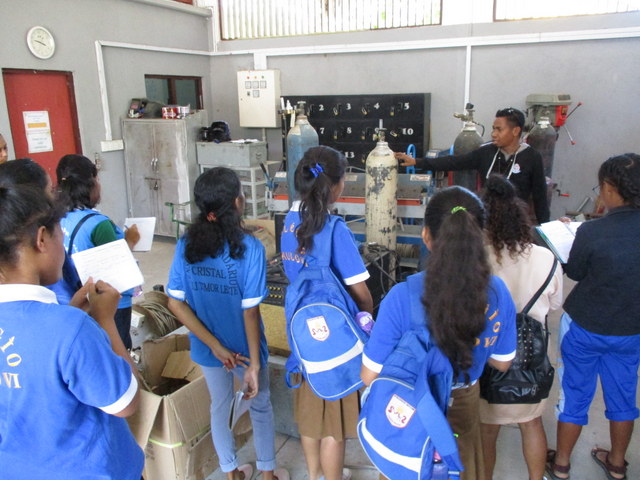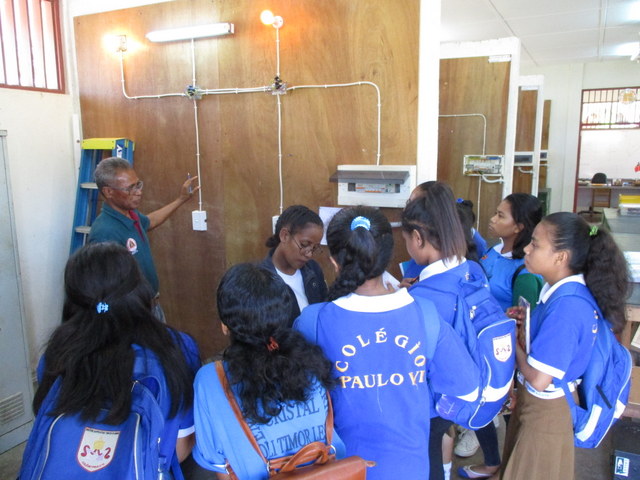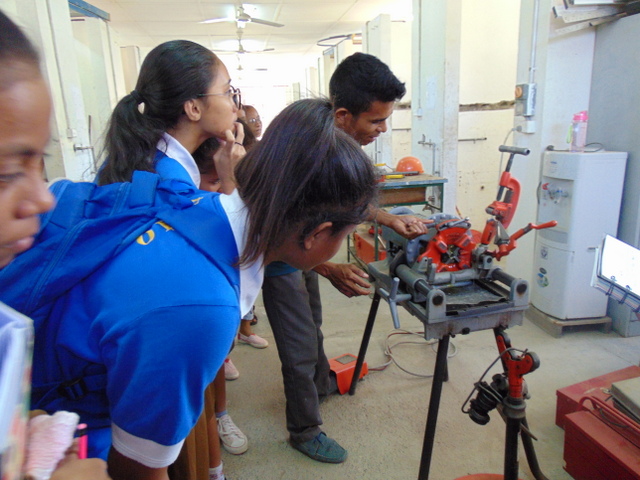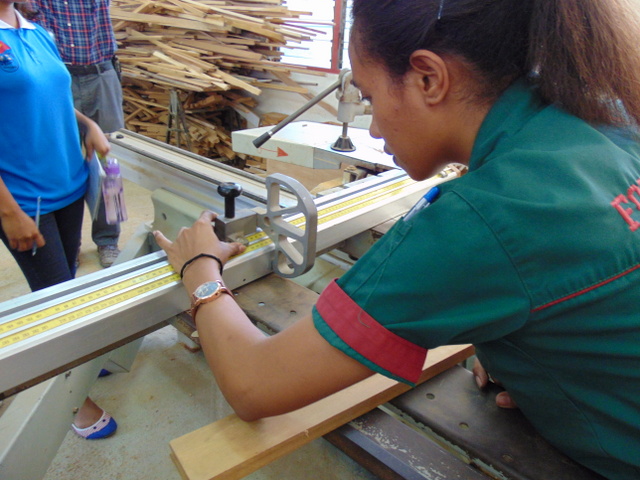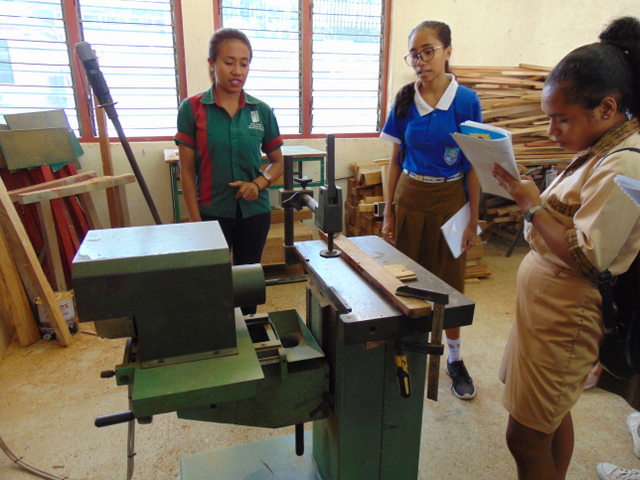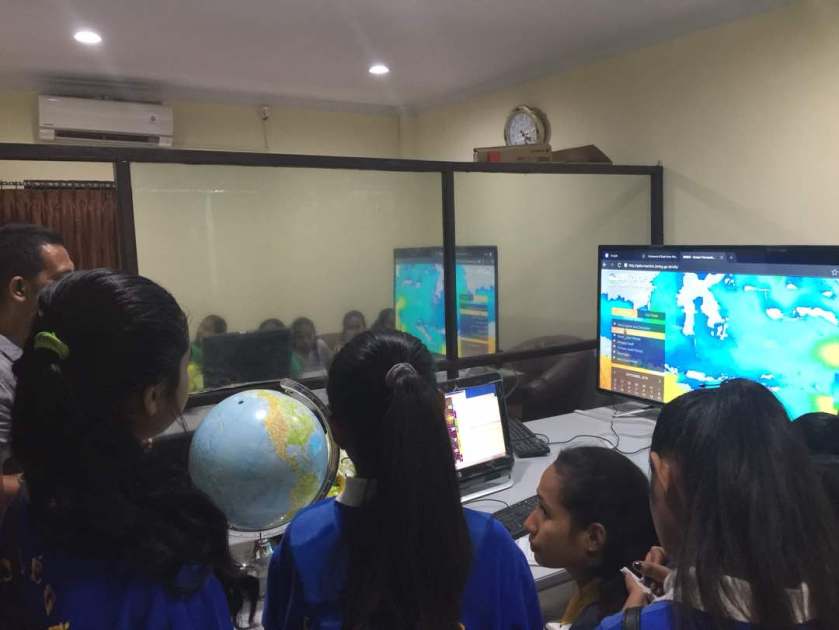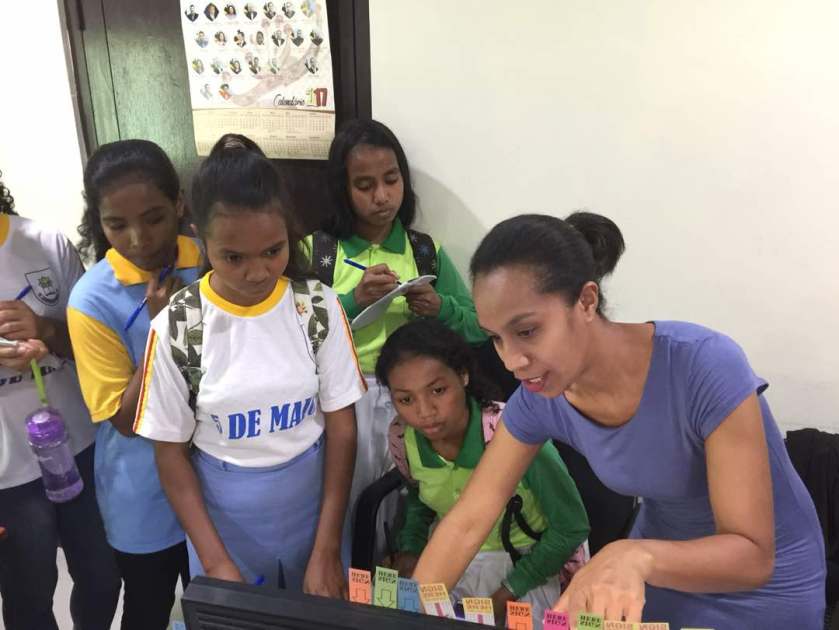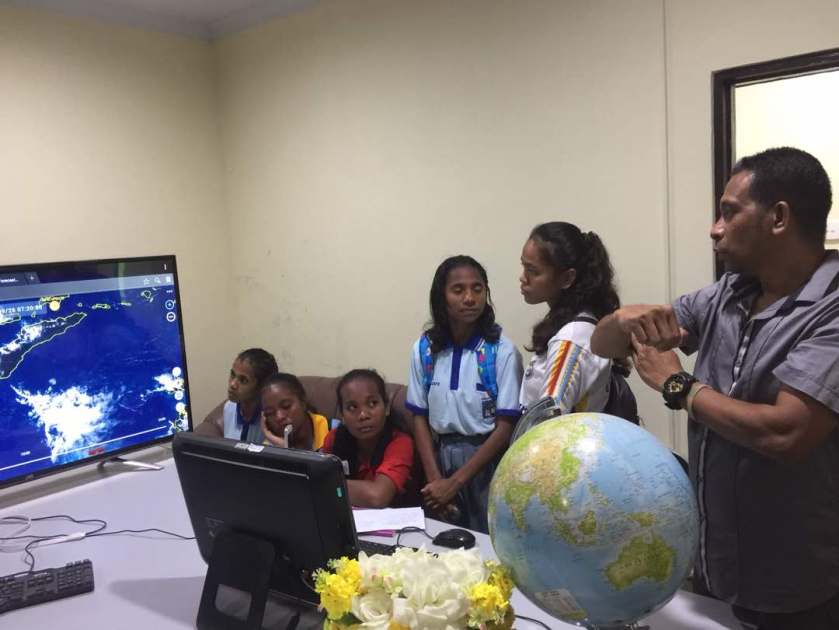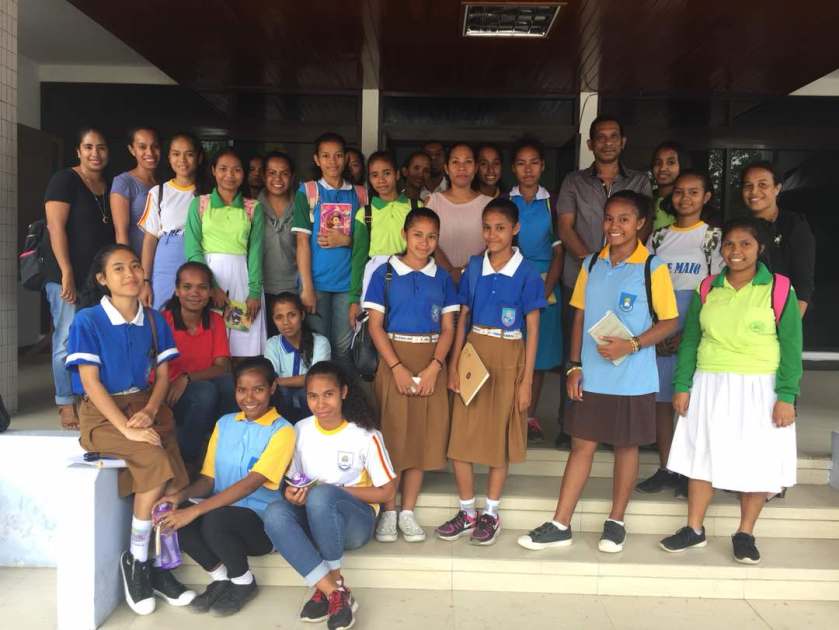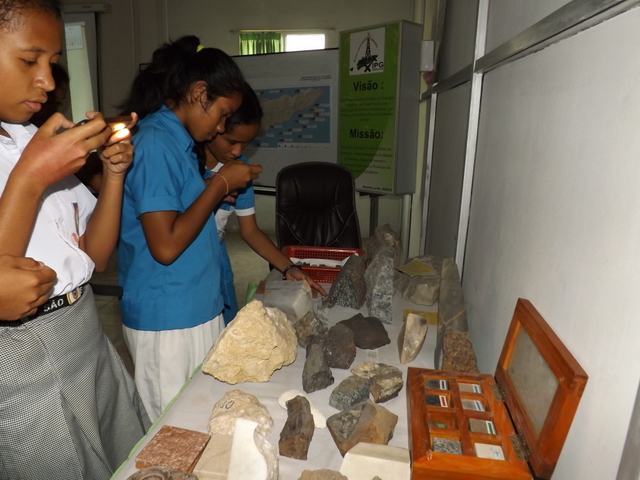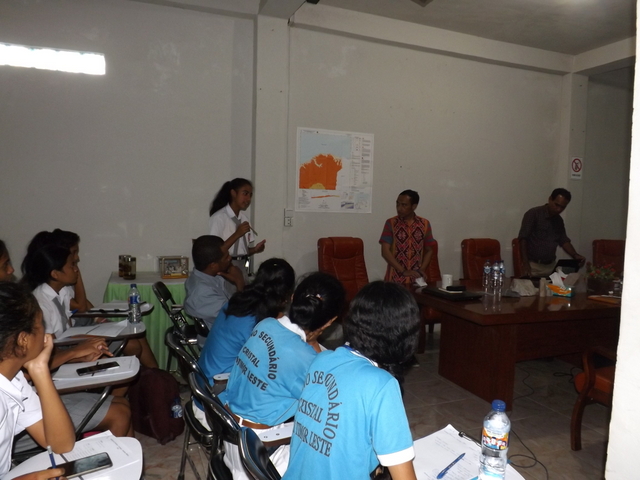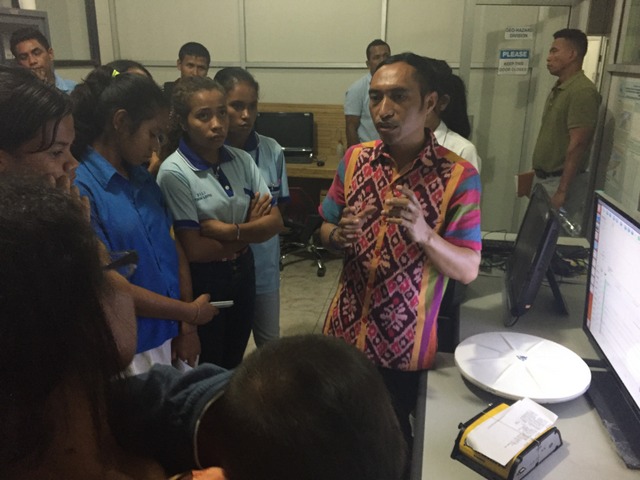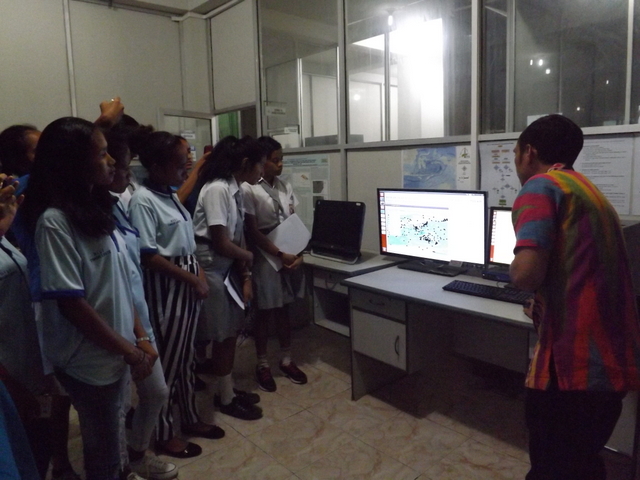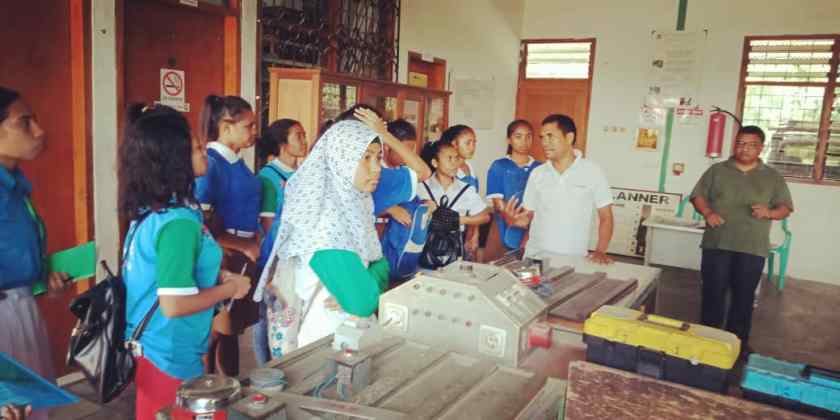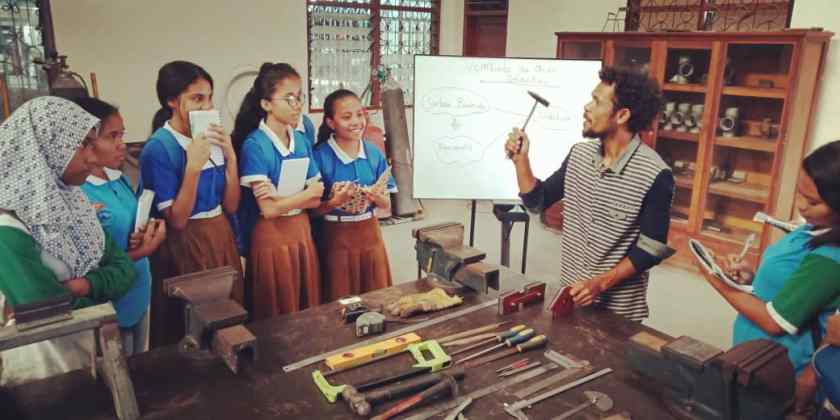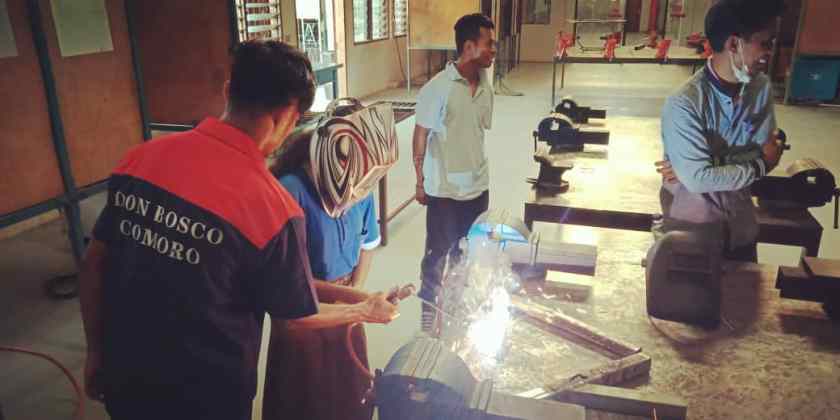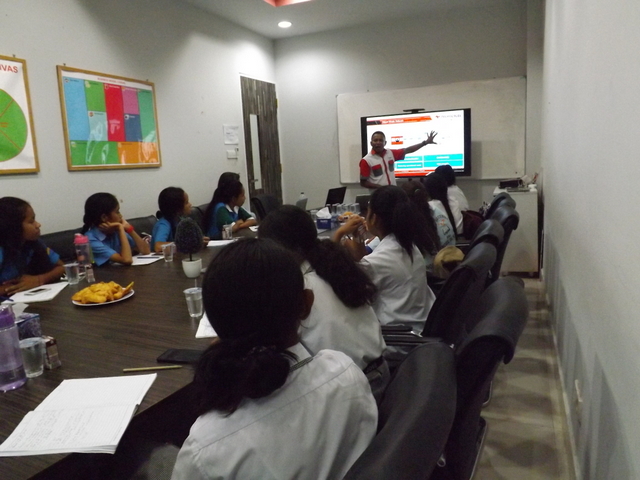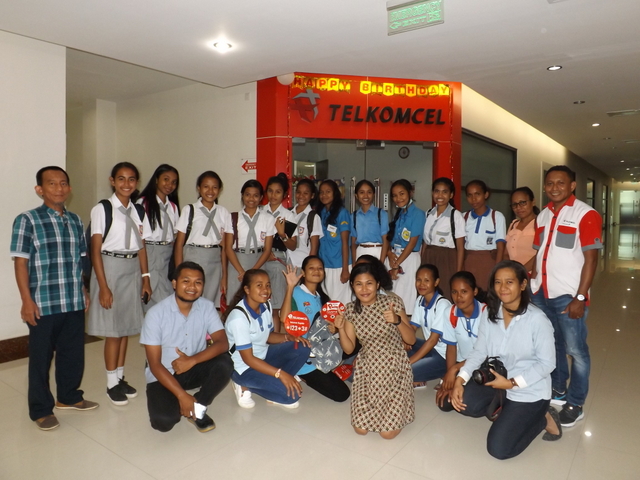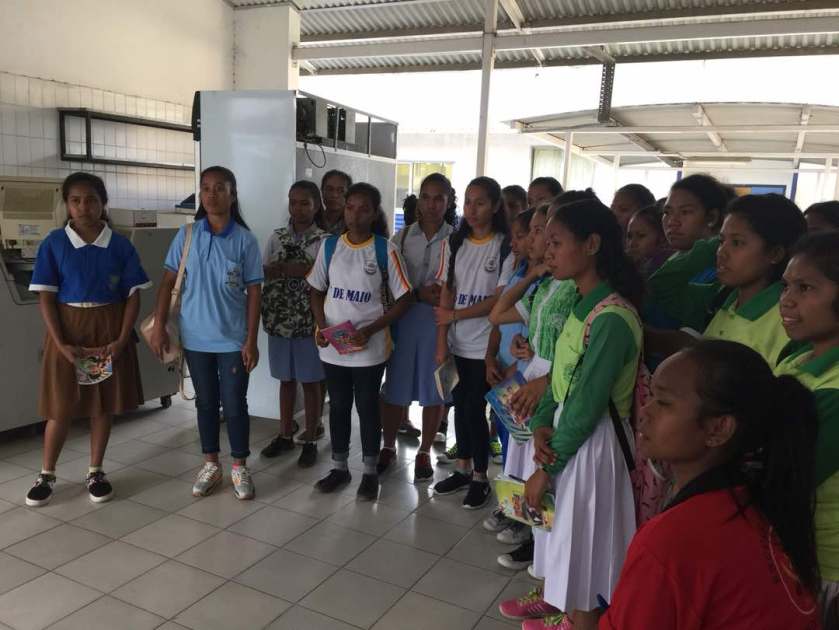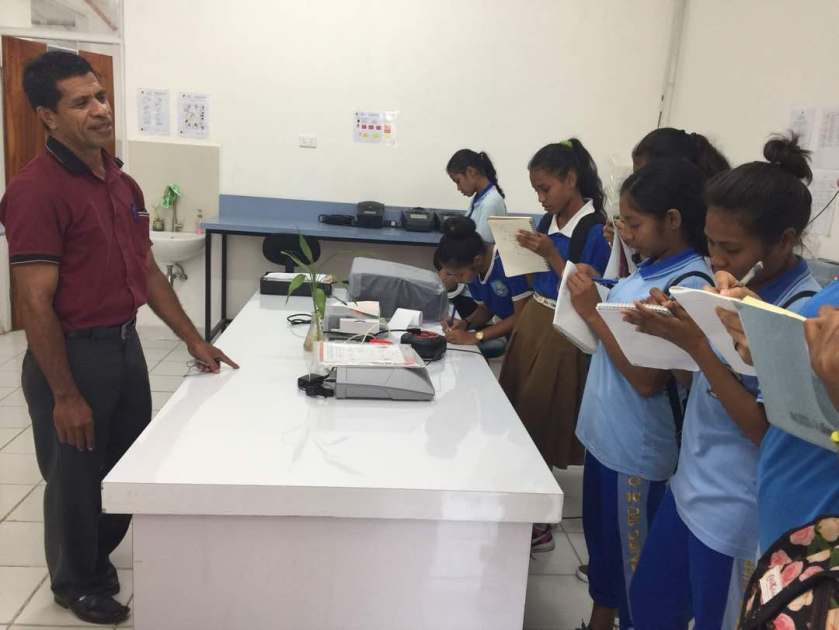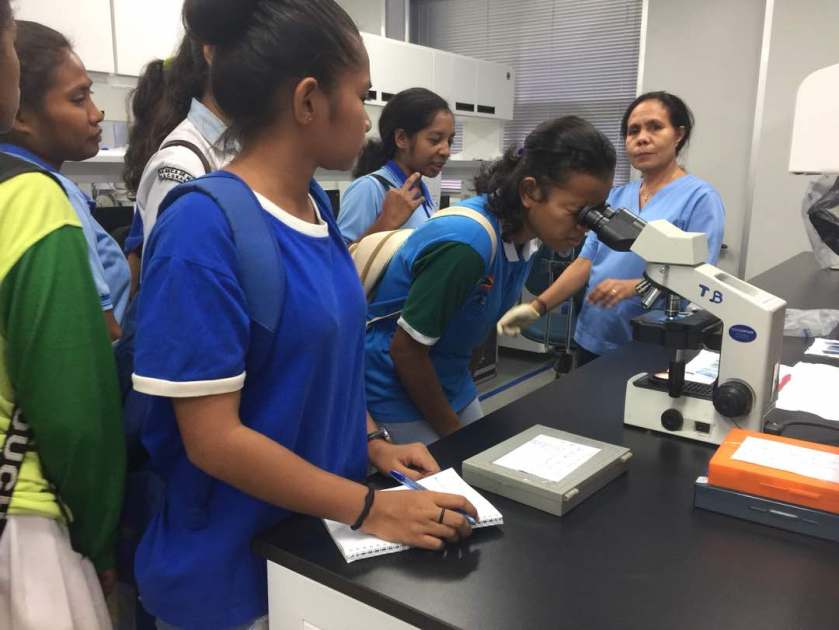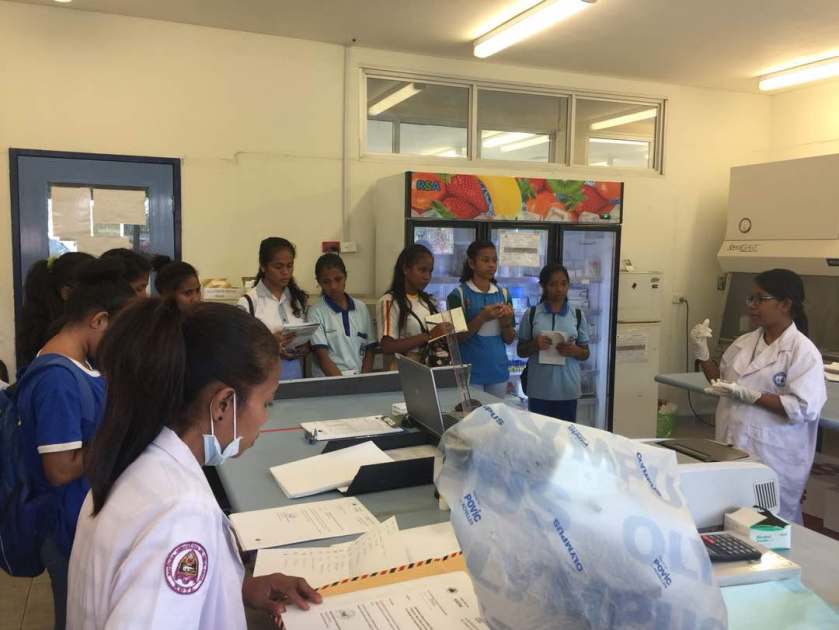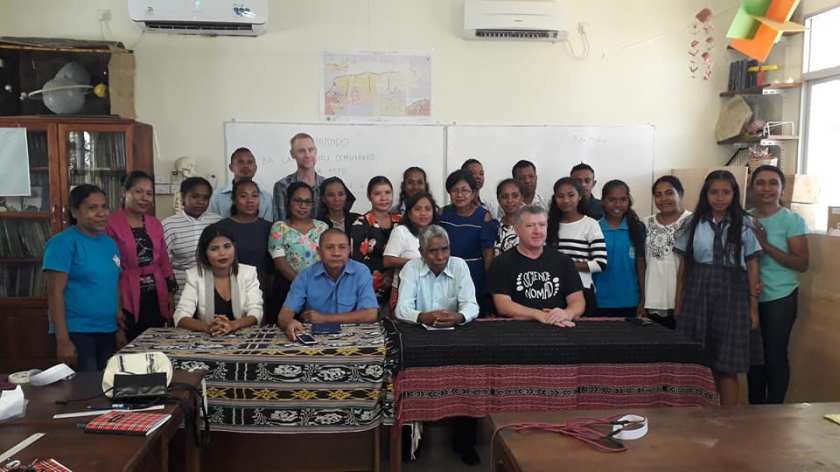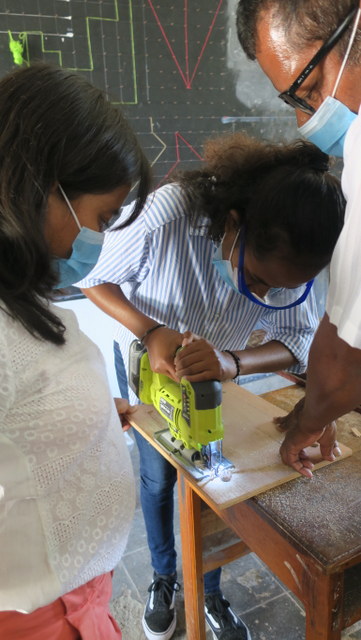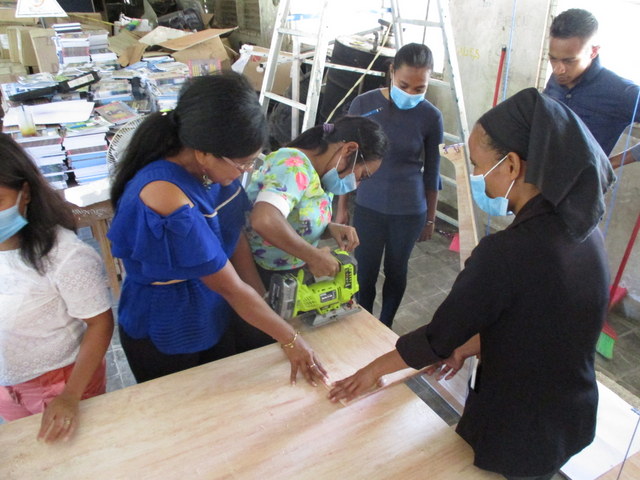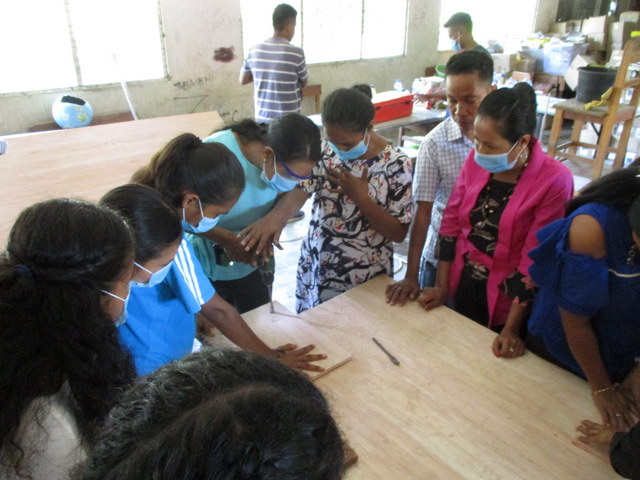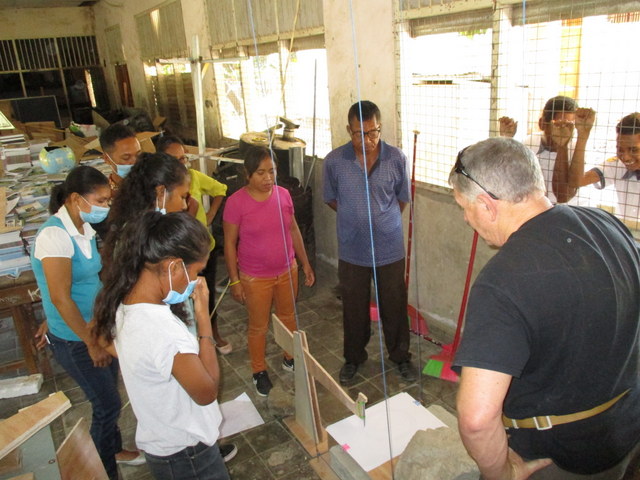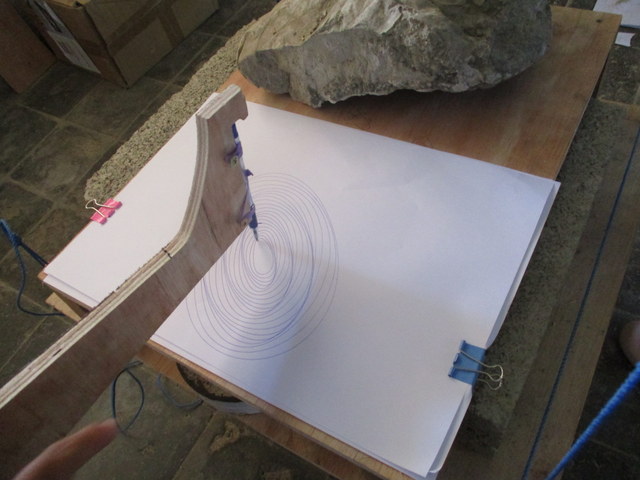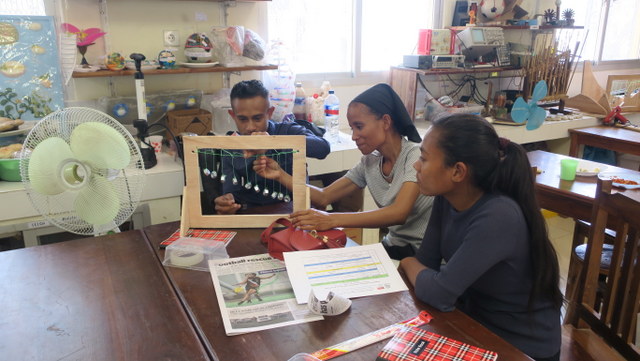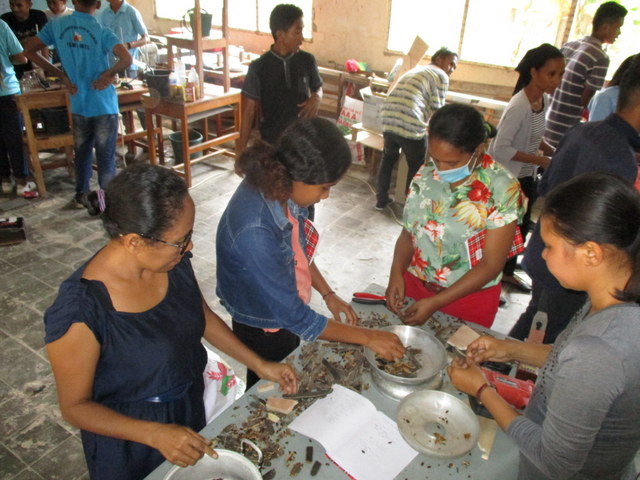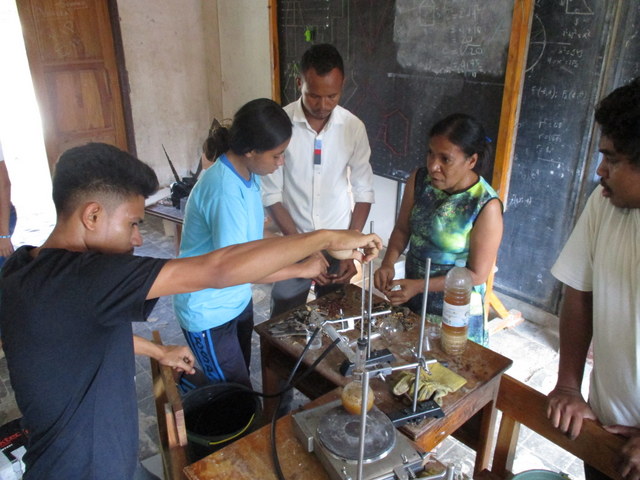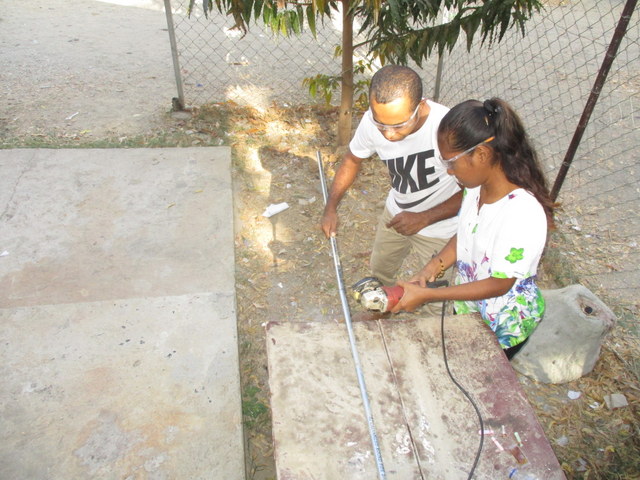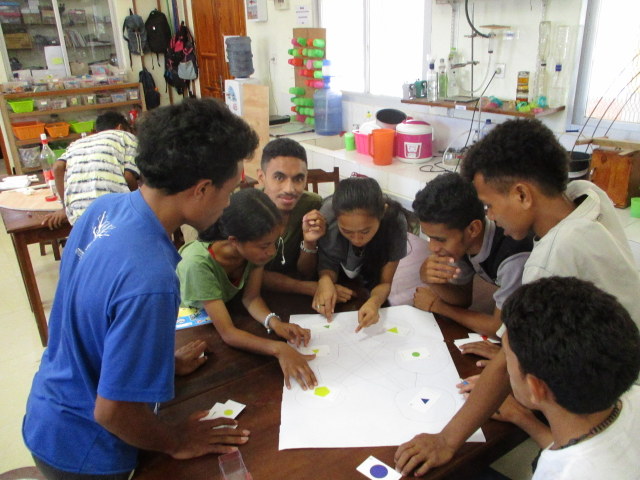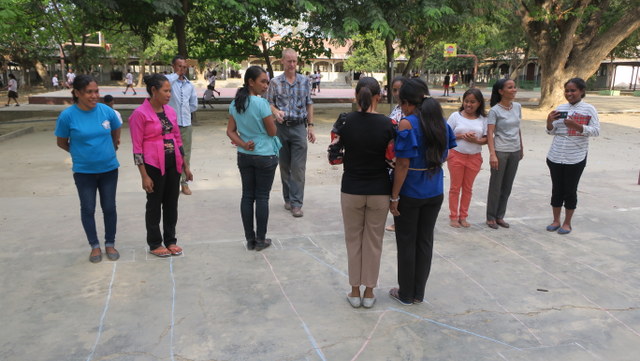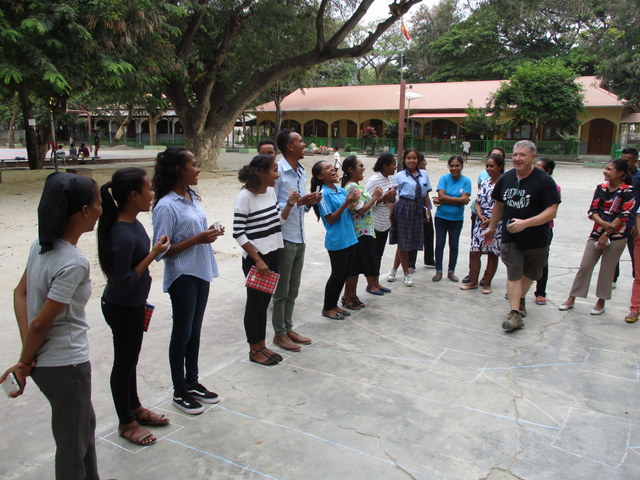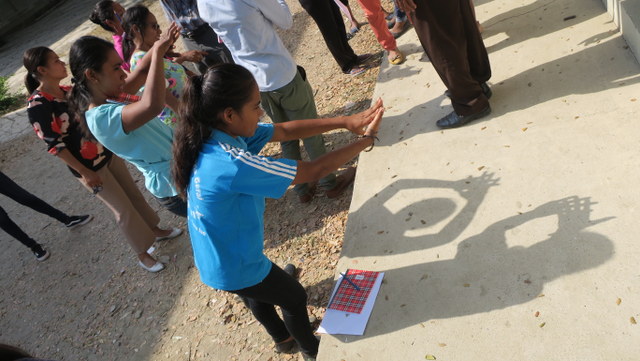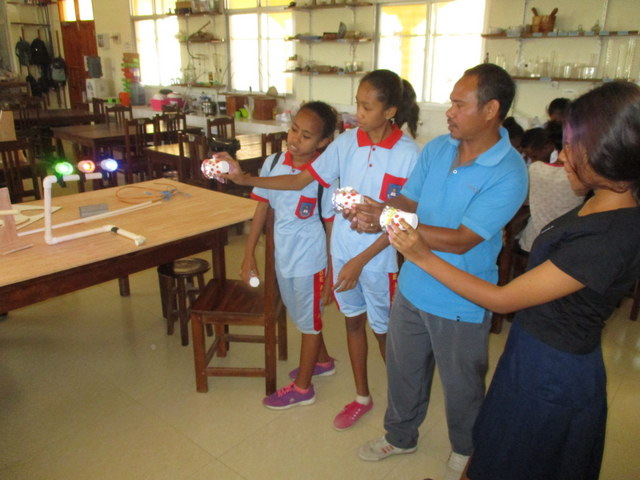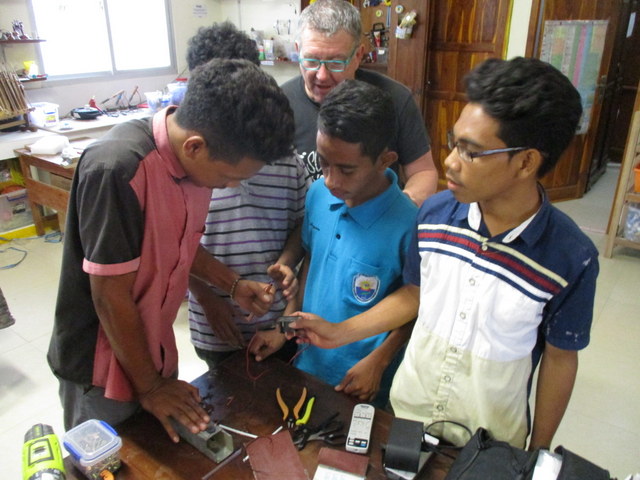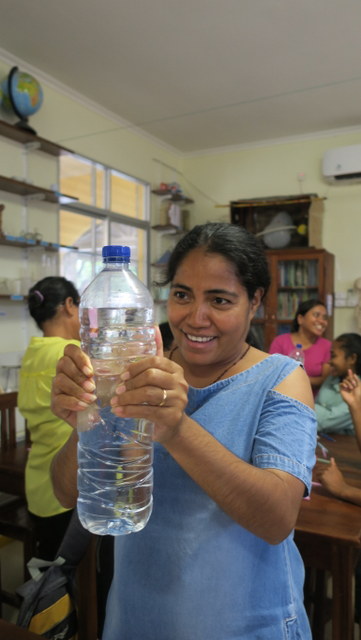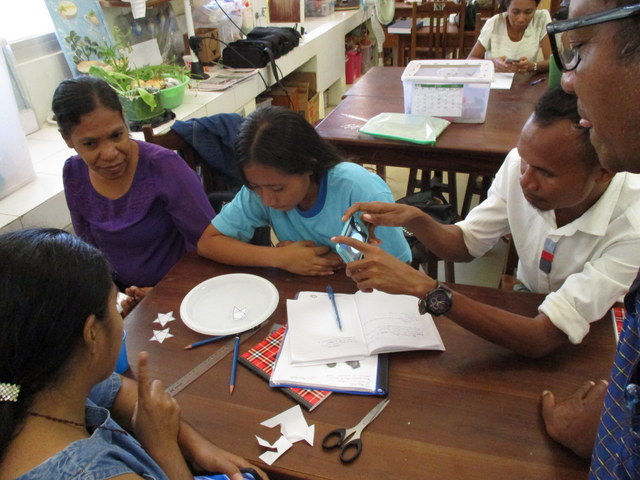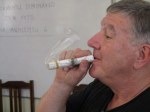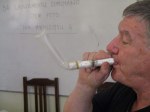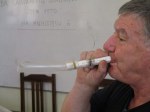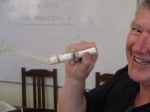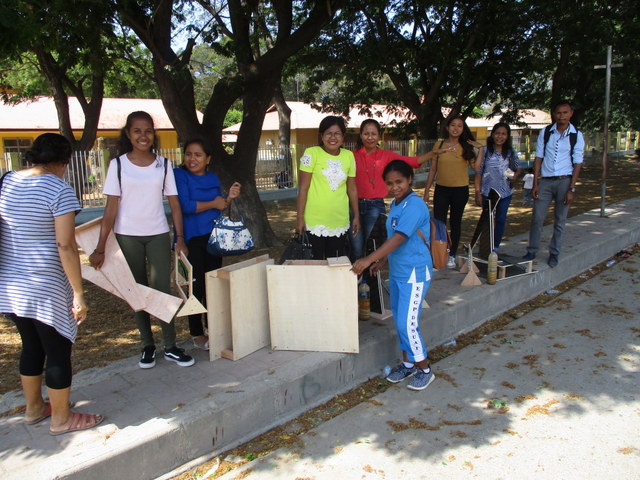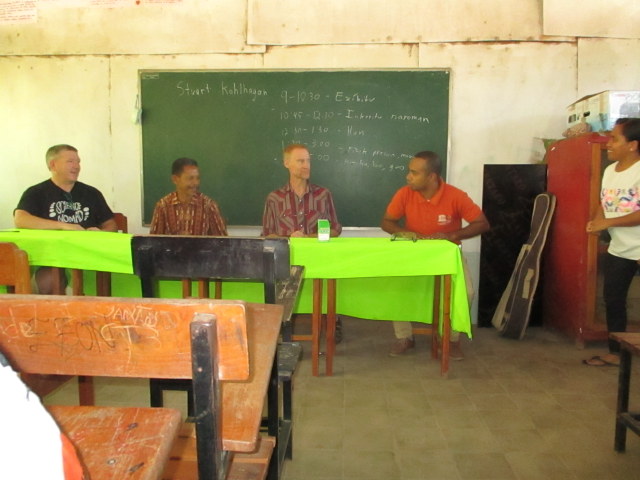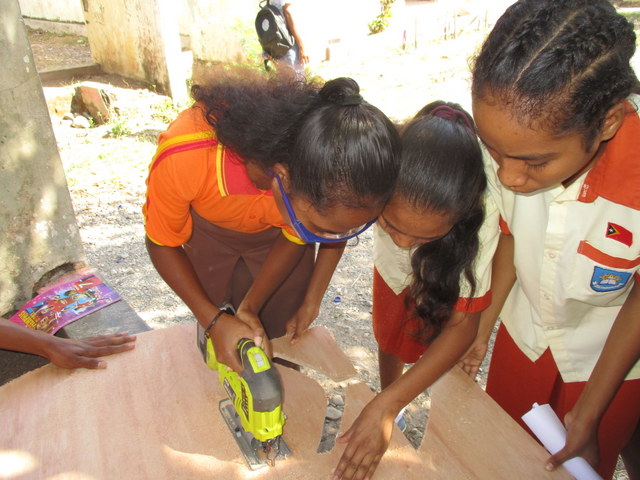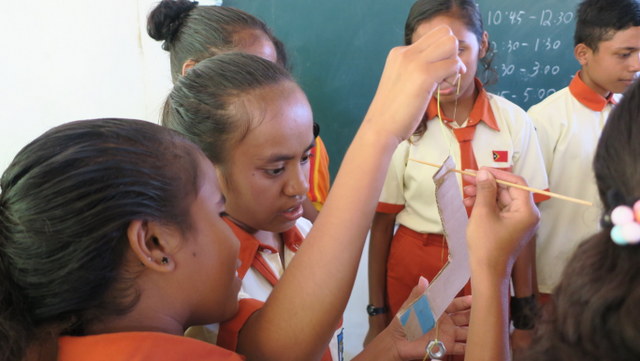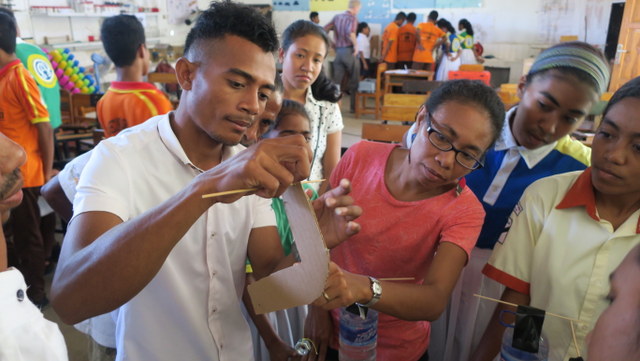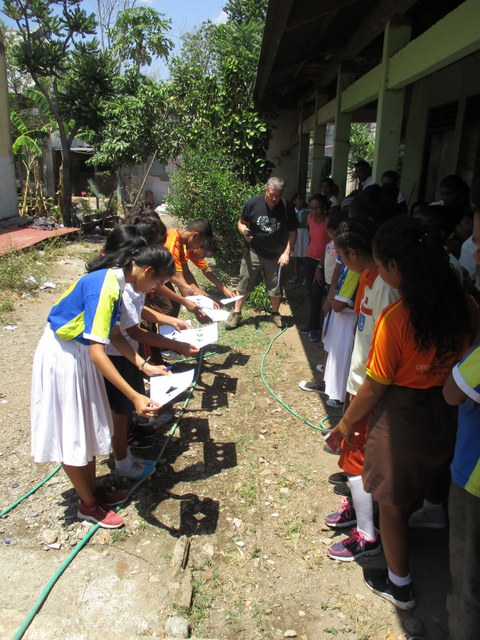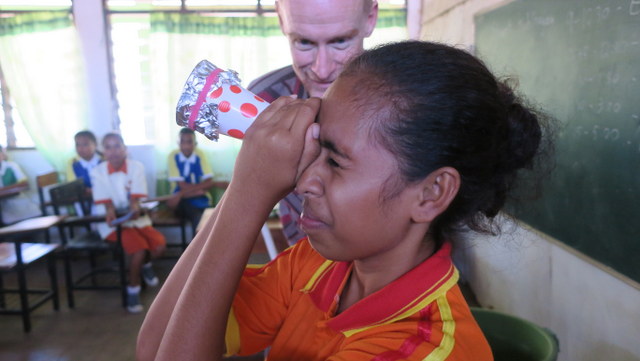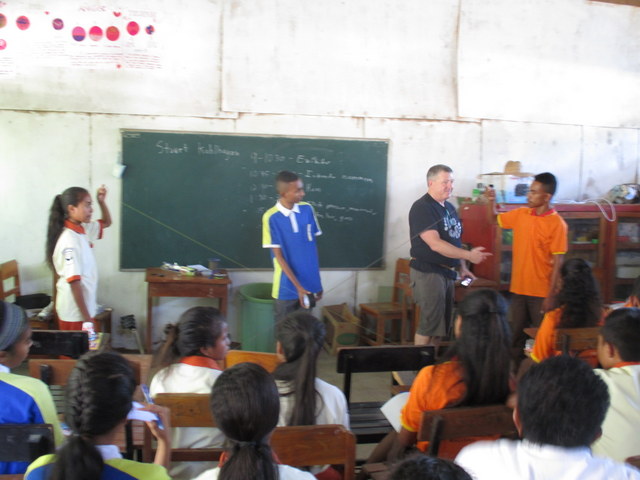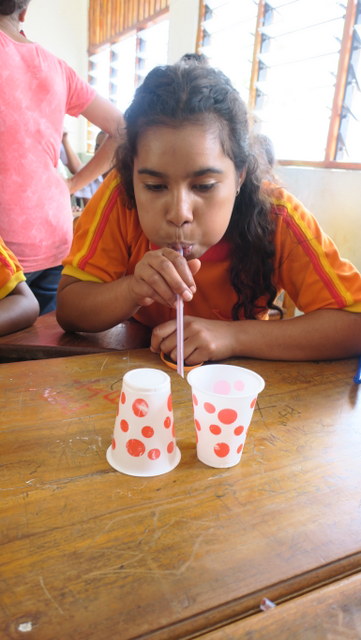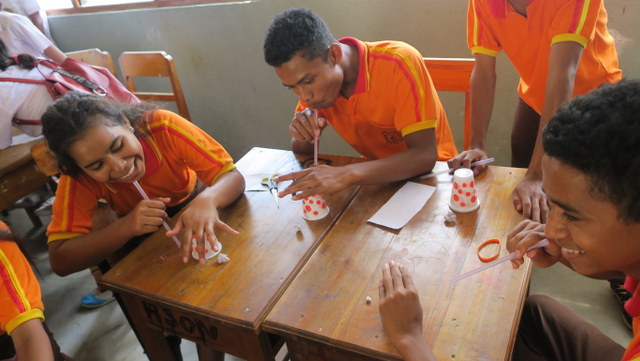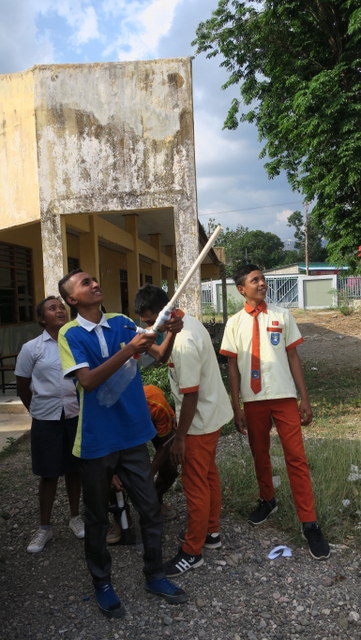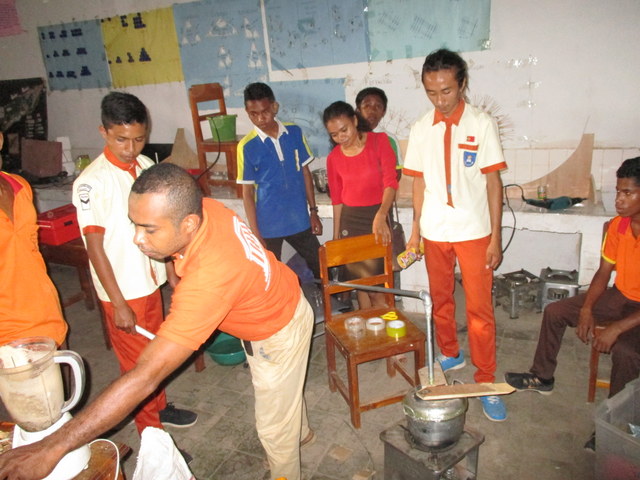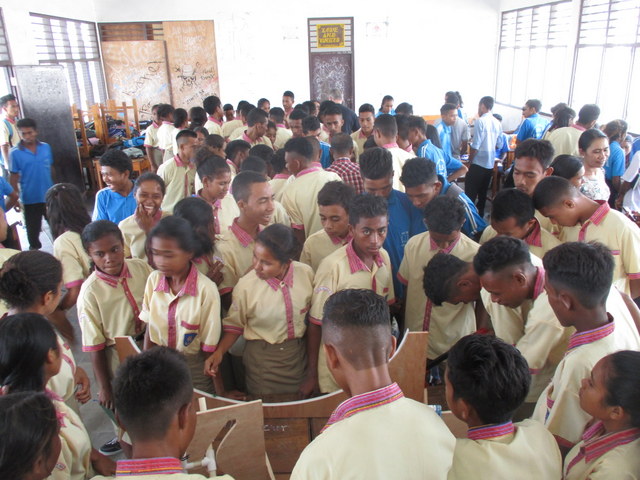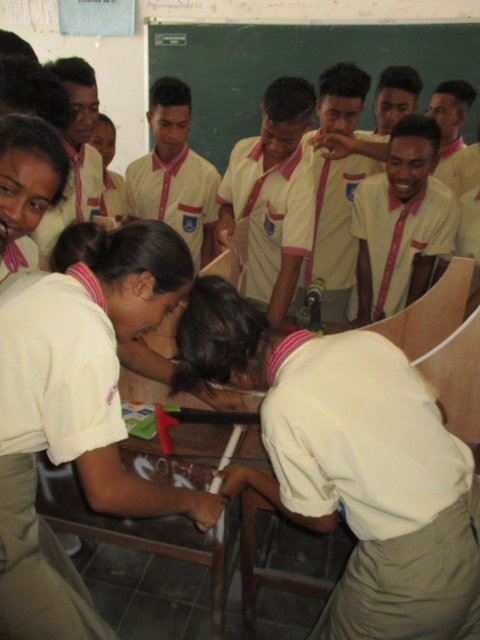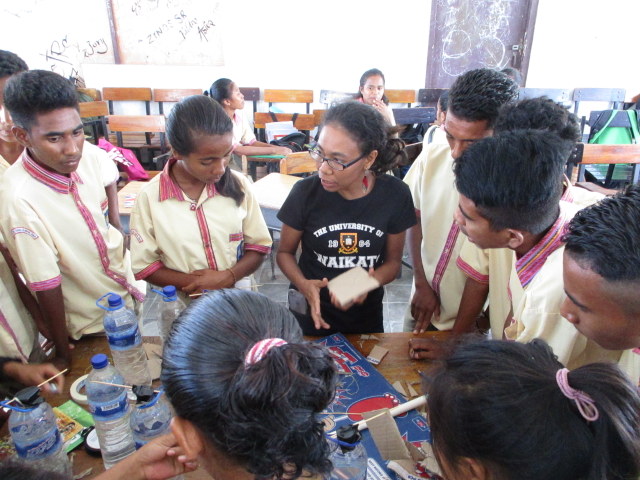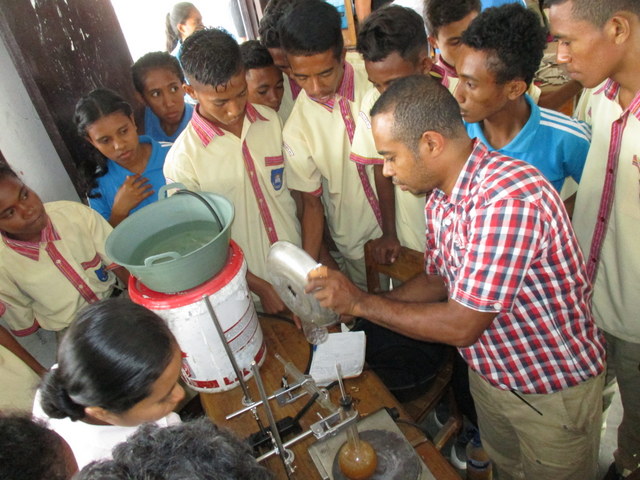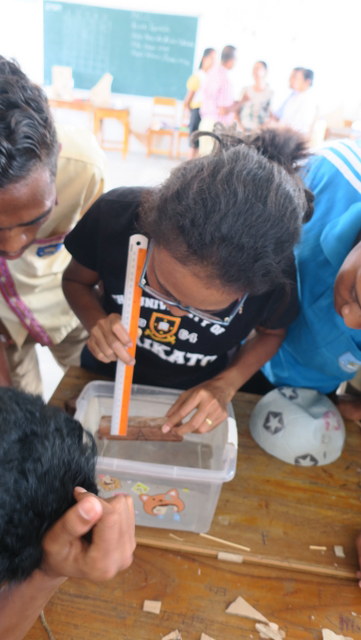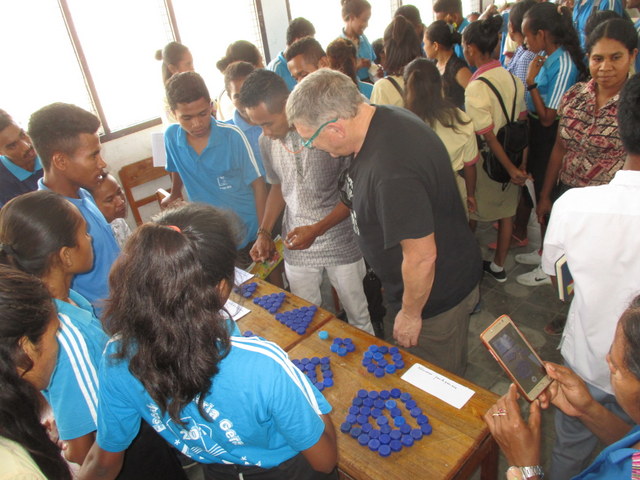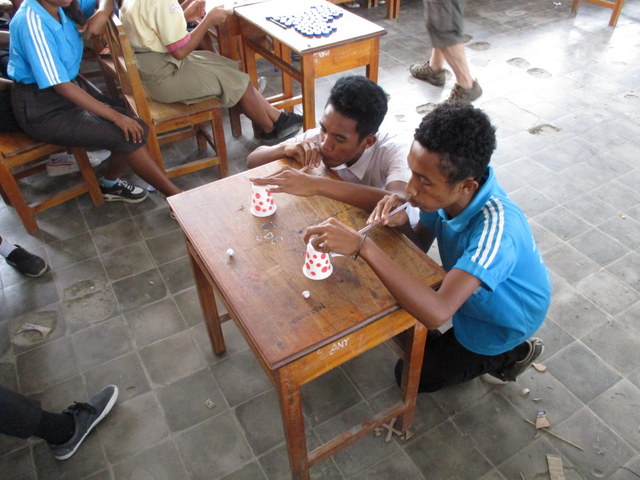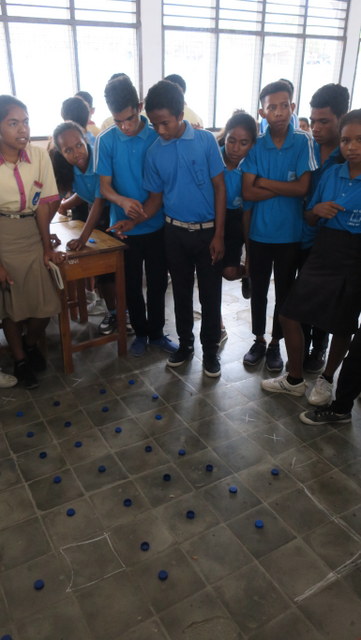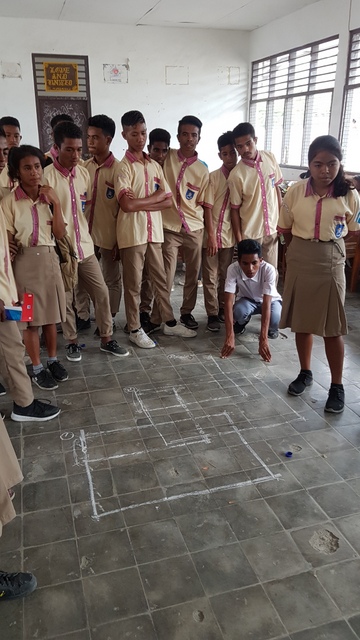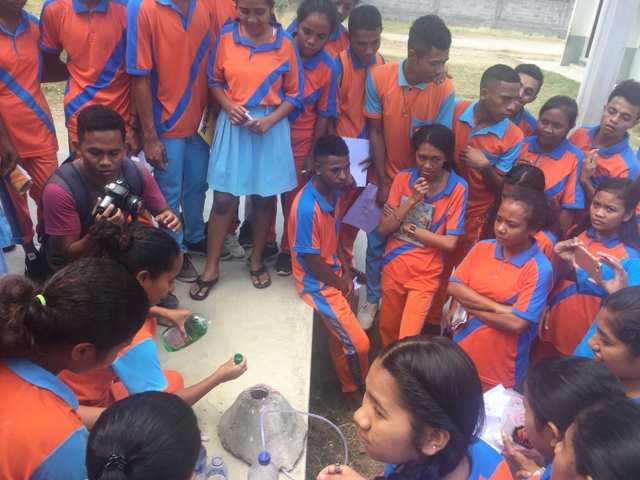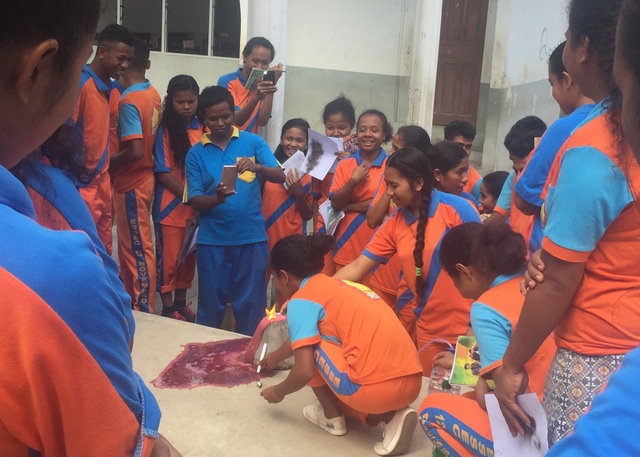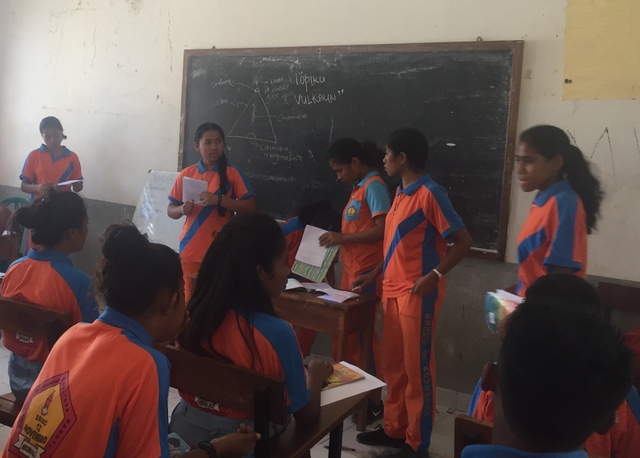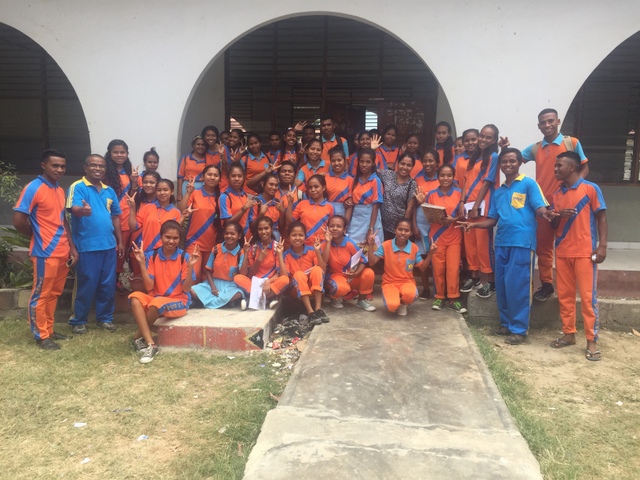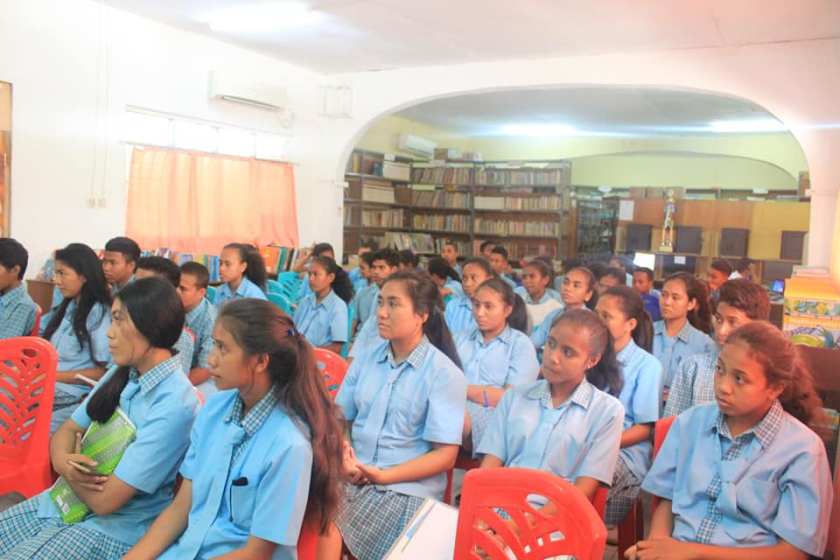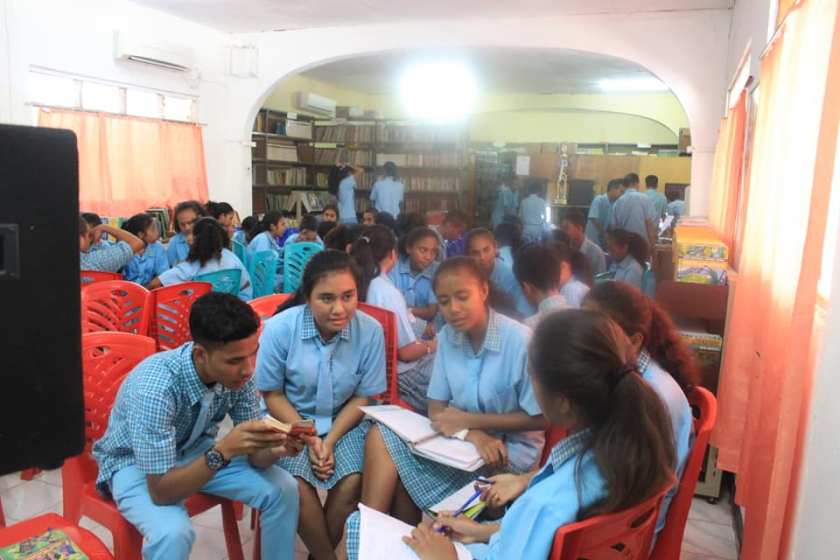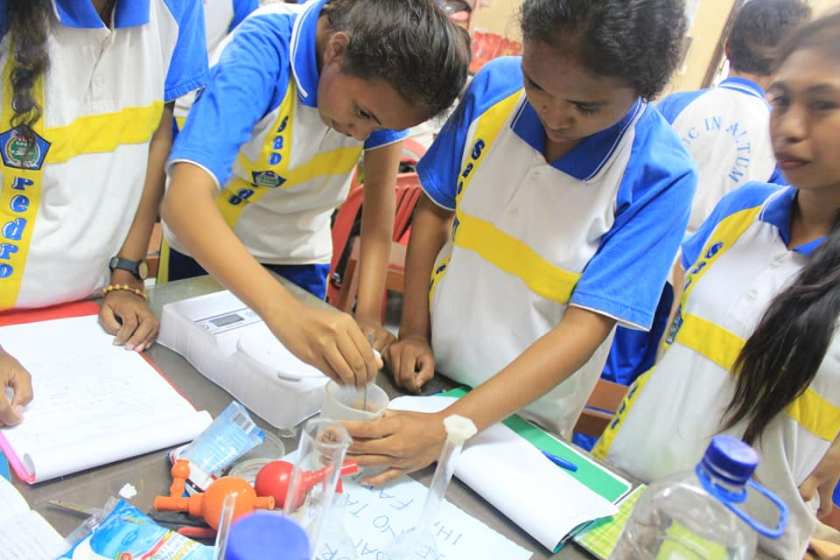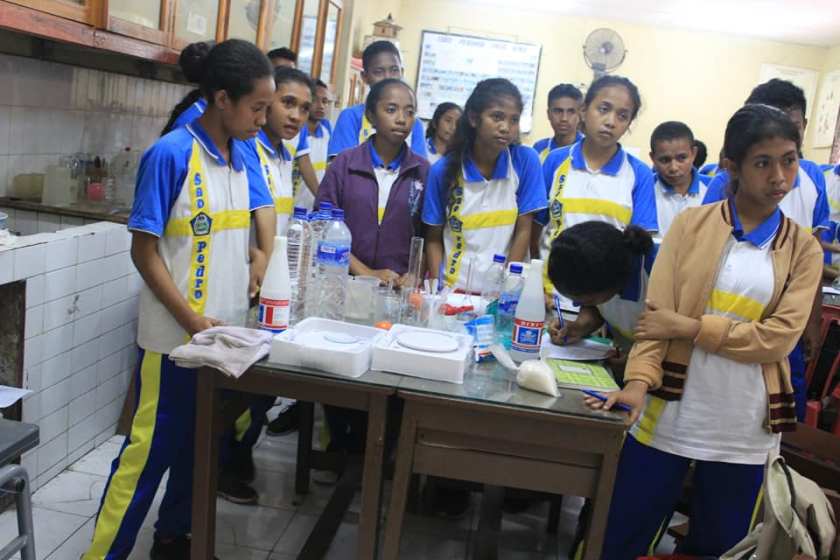SESIM, the Center for the Study of Science and Mathematics, within the Timor-Leste National Commission for UNESCO, commemorated the occasion of World Science Day (adding also mathematics) with a camping/seminar/exposition event on November 7th through 10th in Venilale, Baucau. More than 500 participants enjoyed the event, sponsored by ConocoPhillips, the Ministry of Education, and the UNESCO Jakarta office.
We started by preparing the space at the Catholic high school, Escola do Reino do Venilale. We set up a massive filter system and passed out canteens so that everyone could have free drinking water.
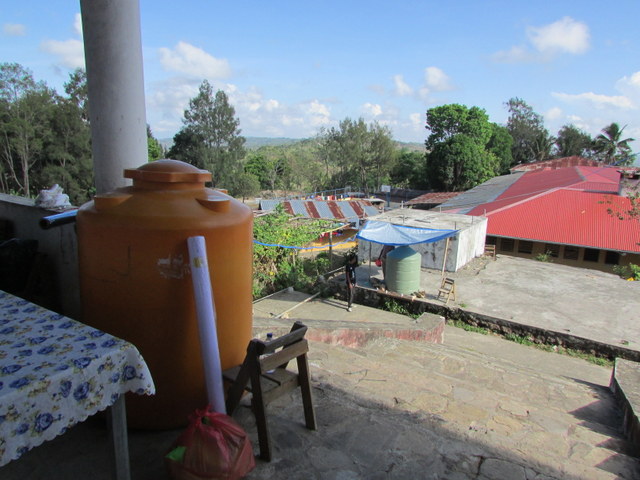
Water in general was in short supply, and our participants made best use of the giant tanks at the school.
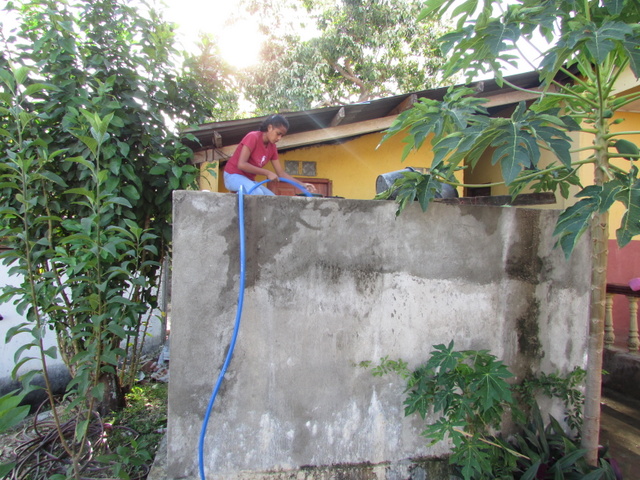
Food was provided by a great team of women based in Venilale. We were never hungry and often ended up stuffed.
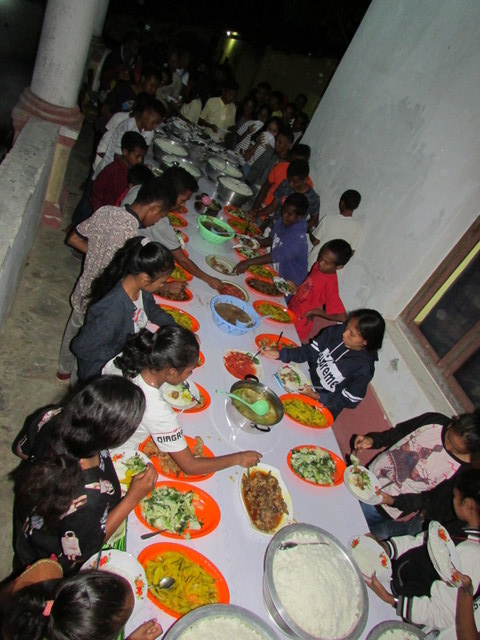
After everyone had arrived on Wednesday evening, we held an opening ceremony during which our team from the Central Lab in Dili launched a blinking projectile more than 30 meters in the air using hydrogen that resulted from the reaction of iron and battery acid within a specially prepared pipe. Nearby was our artificial friendship fire, a light dancing on blowing streamers, which symbolized our commitment to environmental conservation, by not unnecessarily burning wood or petroleum.
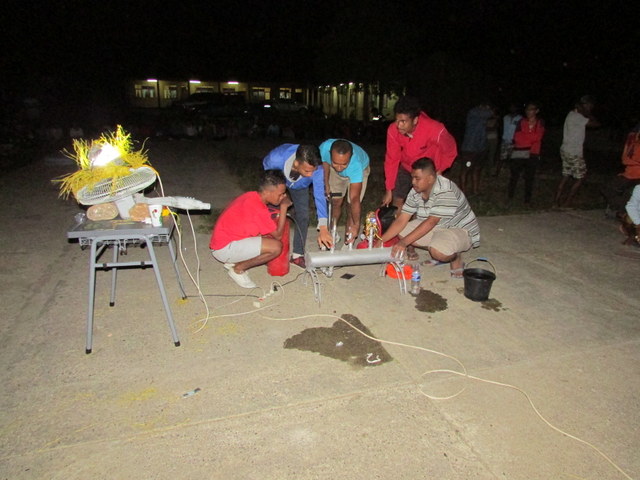
Forty teams from junior highs and high schools across Timor-Leste had already been chosen as winners in our pratika lesson plan competition, and these winners – 3 students and a teacher – were transported to the event as part of their prize. The expo showcased their ideas to the other participants.
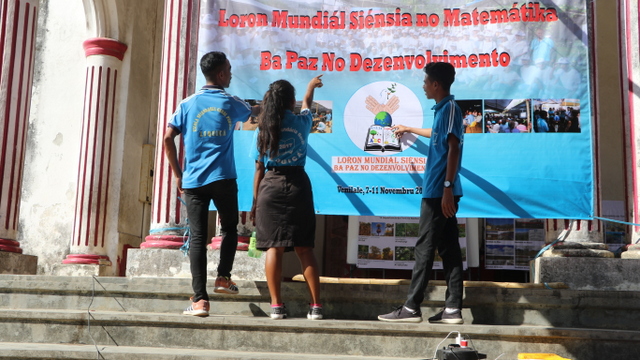
The morning of the 8th was spent with the teams setting up their displays and creating their presentation boards. The boards were donated by the U.S. embassy, an excellent idea from their visit to the event last year. The boards helped focus the presentations and give a synopsis of the pratika quickly to all observers. In addition, a group of mentor teachers from the national university of Timor-Leste went from group to group and listened carefully to the explanations to be sure the concepts were correct and clearly presented.
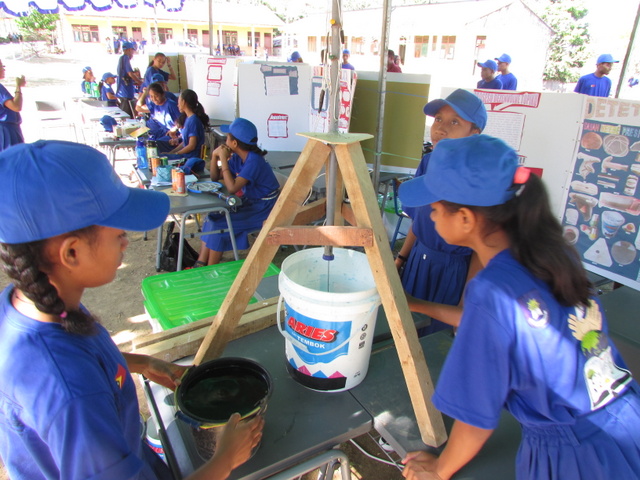
A floating sensor to monitor the height of a river or lake.
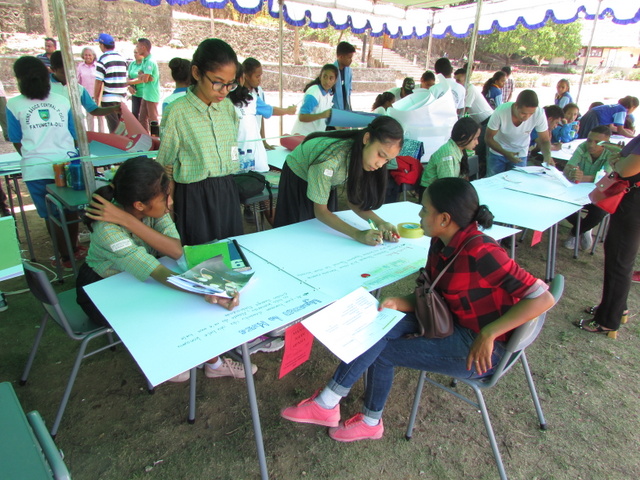
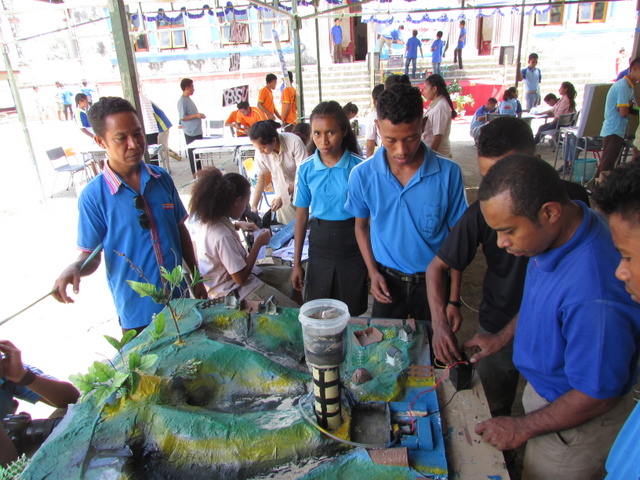
A model of a system for waste water filtration and reuse in a small watershed.
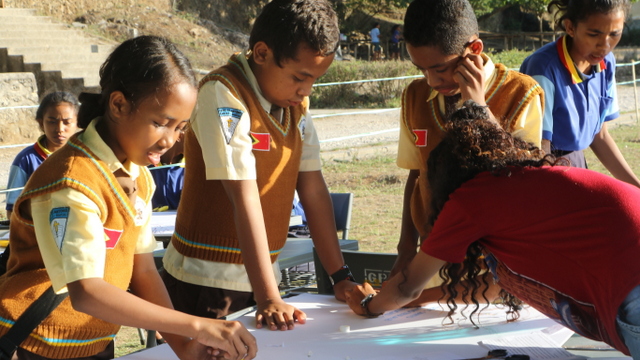
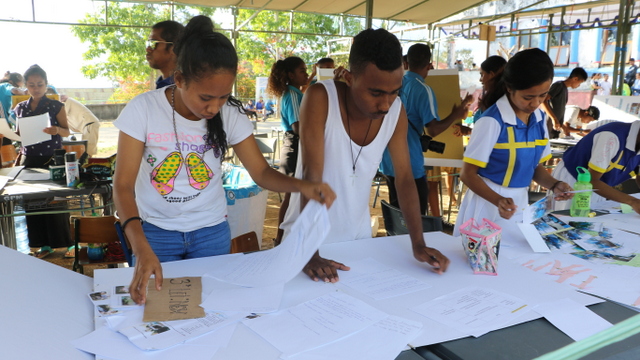
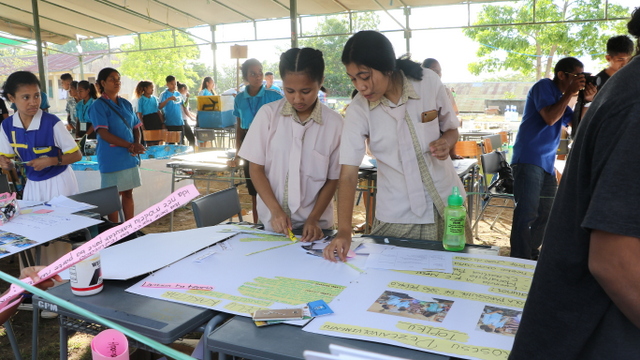
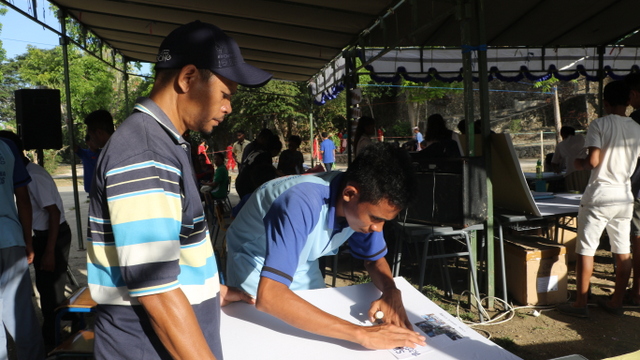
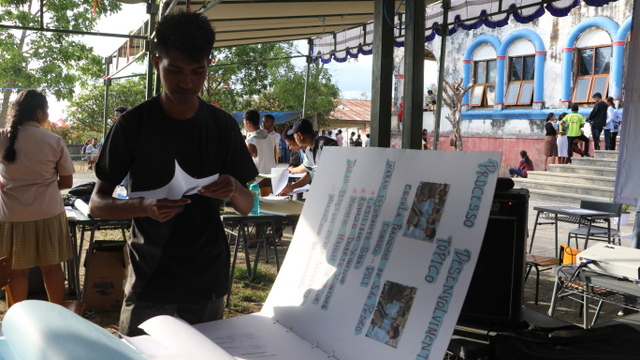
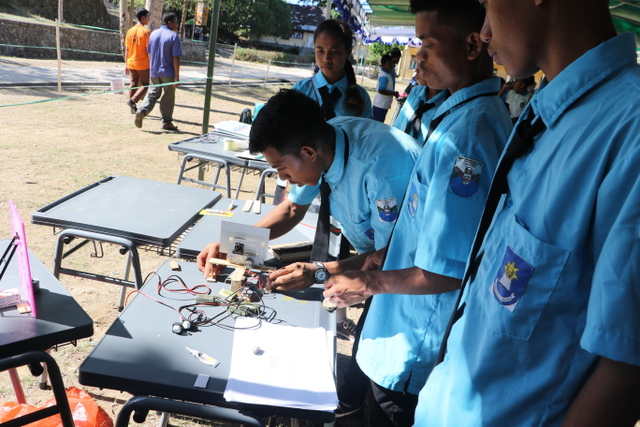
A remote control movable mirror for surveillance.
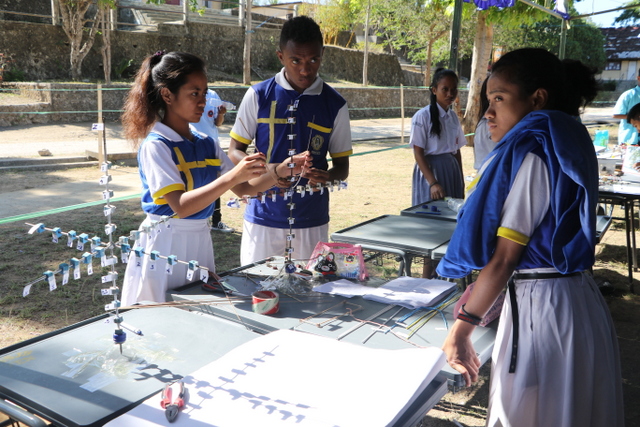
2- and 3-D coordinate systems allowing the display of various geometrical functions.
While the winners were preparing their displays, SESIM offered 10 different seminars to the other 200+ participants, students and teachers alike.
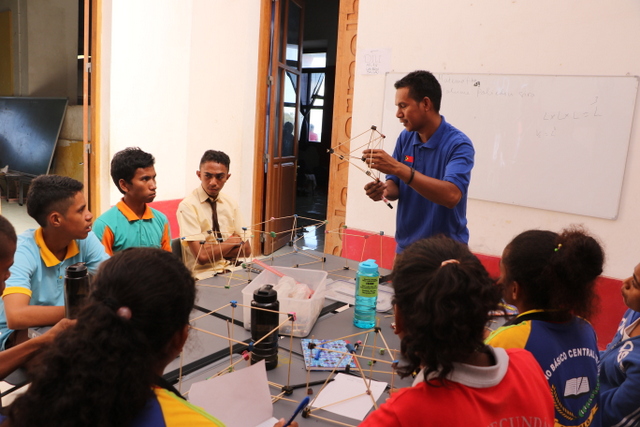
That’s Mestre Hortencio teaching about the volume formulas of geometric solids.
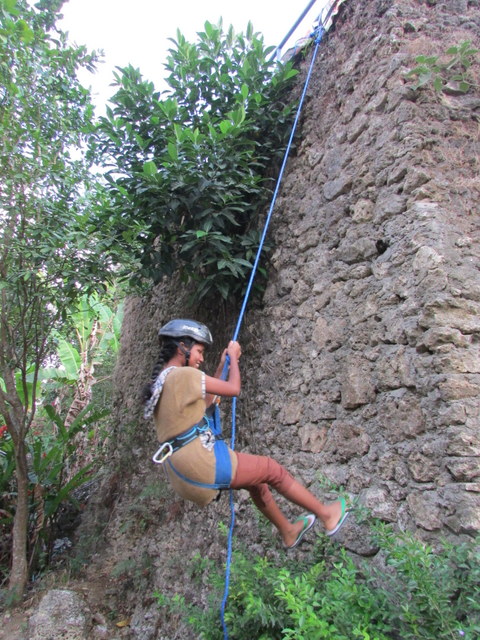
This student is hanging at such an angle that the force pulling her against the wall is 1/6th of her weight, thus equaling her weight on the moon. She can jump and walk around horizontally as if she’s walking on the moon.
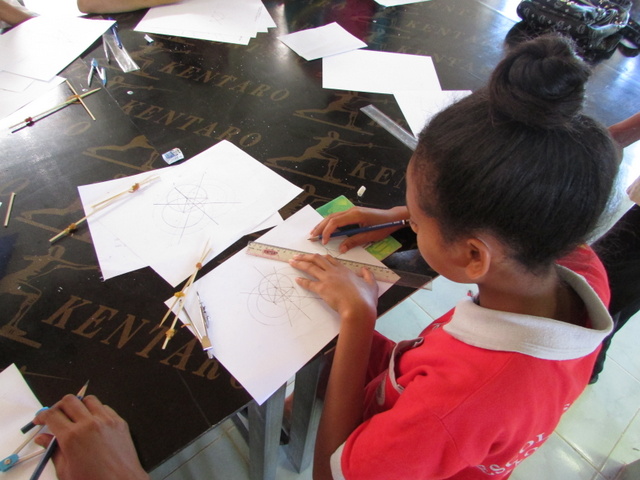
This student is learning to draw perpendicular bisectors of line segments, and thus identify the orthocenter of triangles using only a compass and ruler.
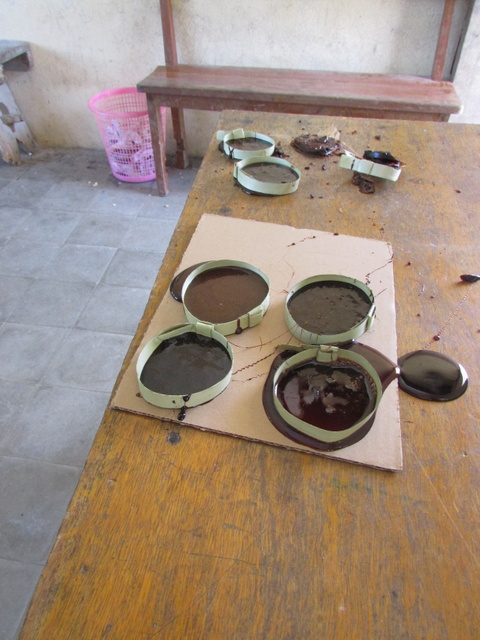
The Maliana Knua Pratika (Home for Hands-on; Timor’s small science centers in the districts) showed participants how to make red sugar from palm juice, as well as several mathematical games.
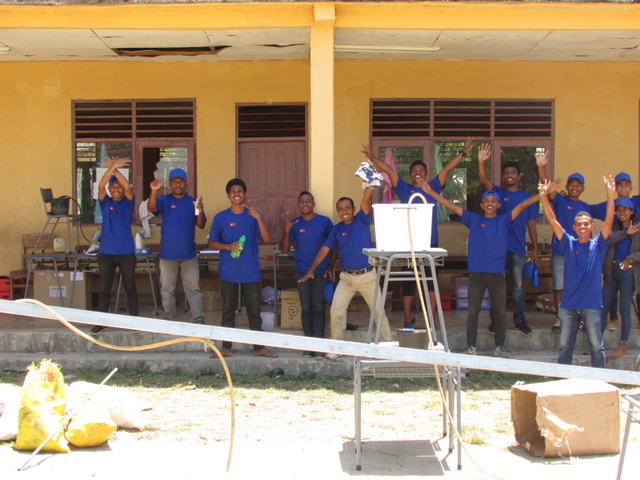
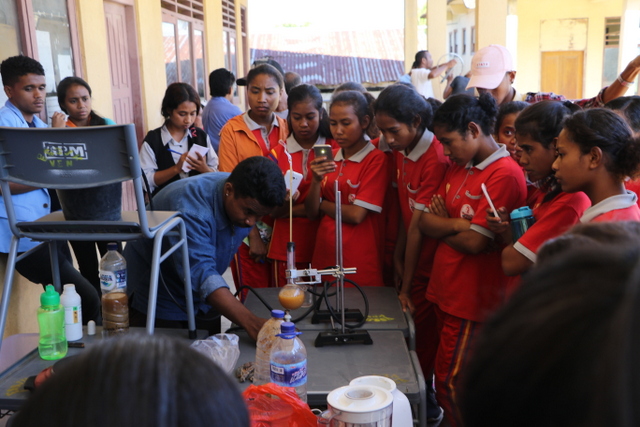
The Dili central Knua Sentral ba Pratika showed how to distill plastic waste into petroleum that will later power Mestre Caetano’s motorcyle. The first distillation happened in a 50 gallon drum and the long metal pipe The second one happened in the commercial set up with the spherical flask bubbling away.
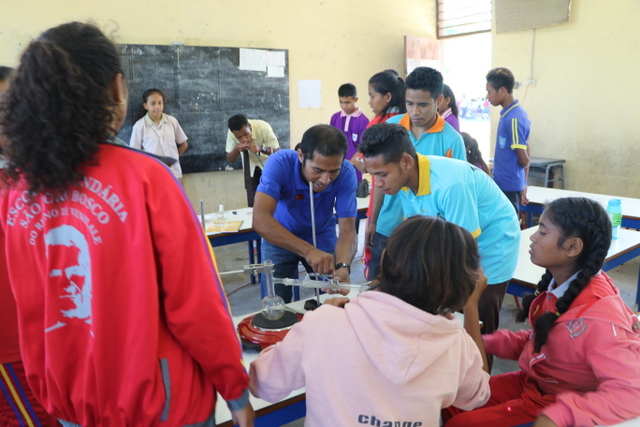
Mestre Dani is showing a way to distill and analyze the content of alcohol, both from canned beer and local palm wine.
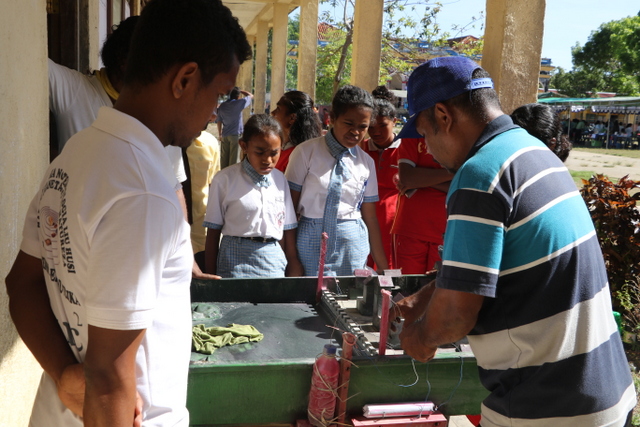
The Suai Knua Pratika made an astonishing machine to model tsunamis. Powered by a foot pump that pushes on small tanks made from tire inner tubes, it unleashes a destructive wave into the unfortunate model village beyond the sea wall.
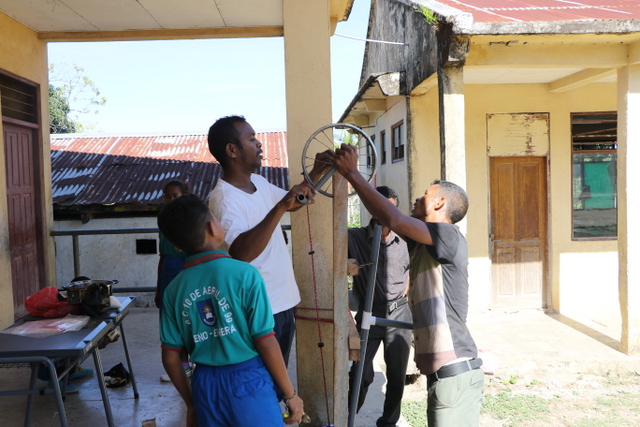
The Ermera Knua Pratika demonstrated their simple string pump, with a hand-crank bicycle wheel up top. They also showed how to make something like corn puffs from local cassava and other starches.
After an evening of science videos and discussions, everyone awoke afresh at 5:30 for exercises and the beginning of the expo. It was formally opened by officials from Baucau municipality and the Ministry of Education, and our Secretary General.
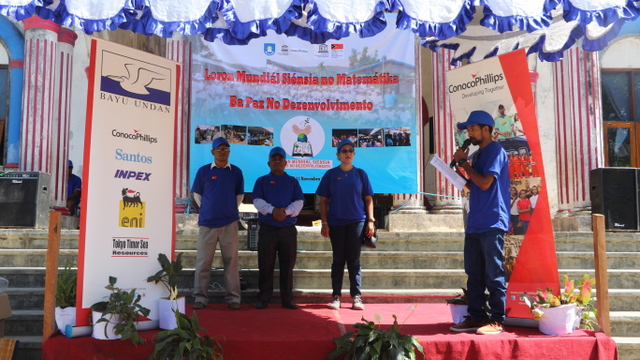
Later, when more bigwigs came, including a representative of the Minister of Education, the local dance group welcomed them with a traditional dance under the hot tropical sun.
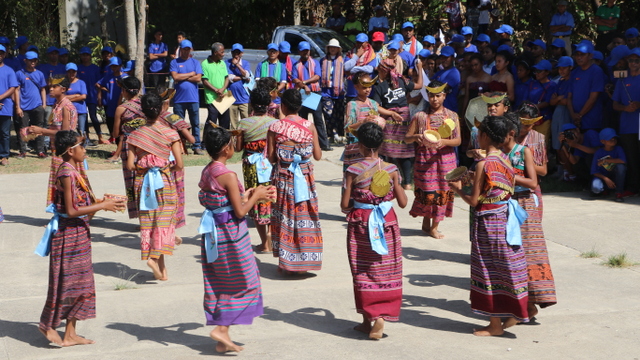
It was then that all the hard work paid off, as hundreds of participants made their way through the expo and the winning groups explained their presentations again and again.
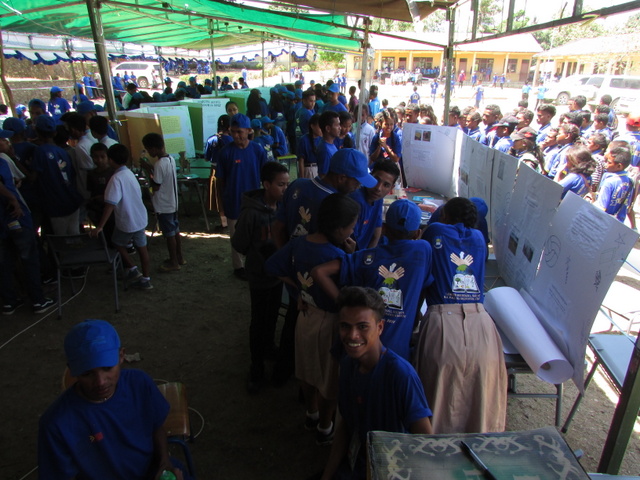
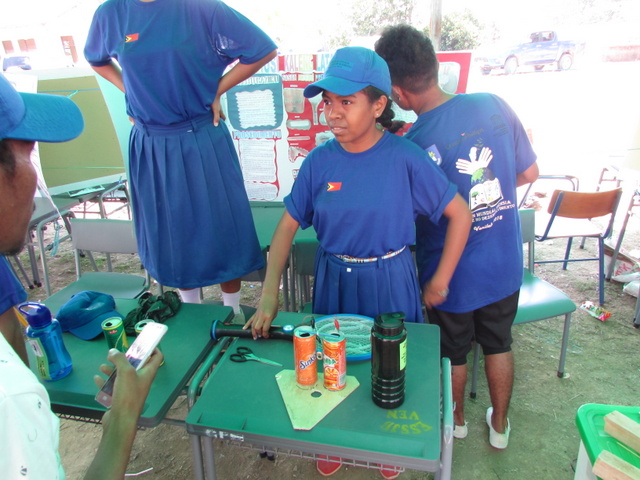
Here an electric mosquito shocker is being used to power a demonstration of electrostatic force: a bottle pop top is pulled back and forth between oppositely charged cans, creating a happy din.
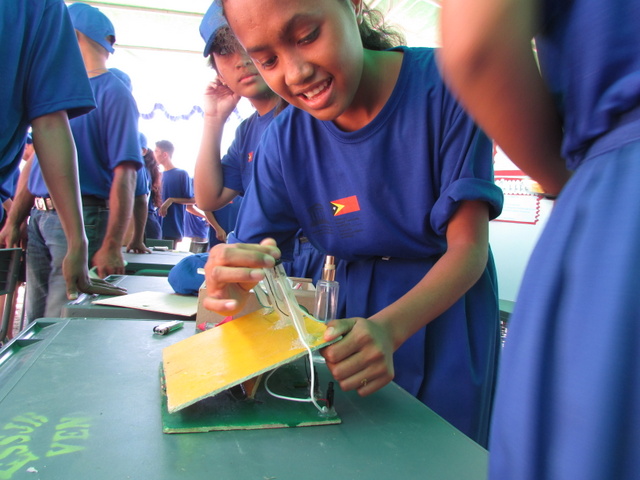
Here syringes are wired up to piezoelectric igniters, and when the syringes with added rocket fins are filled with a bit of alcohol and mounted on top, they can be shot more than 6 meters across the field.
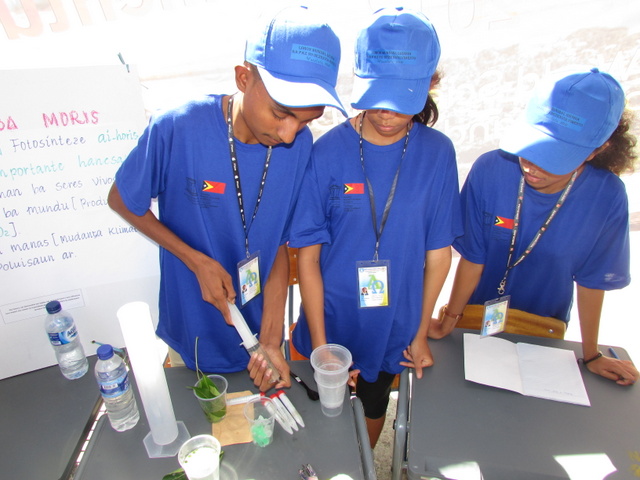
This activity forces the buoyant air out of a section of green leaf, but then allows the section to regenerate its buoyancy through photosynthesis under the tropical sun, causing it to float.

The vacuum created when a syringe is closed off and then pulled back is used here to shoot a little arrow across the field.
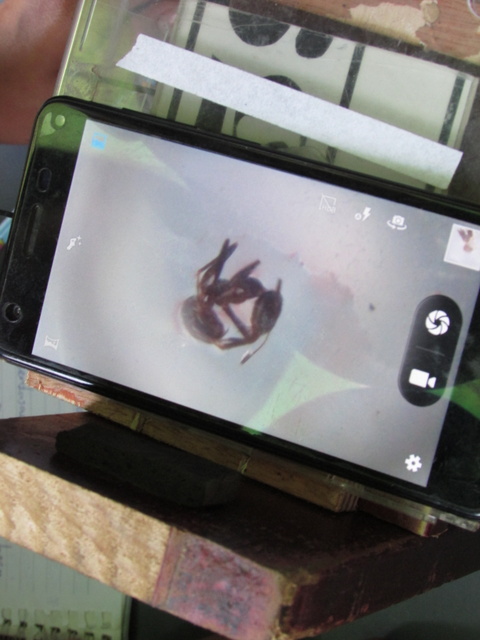
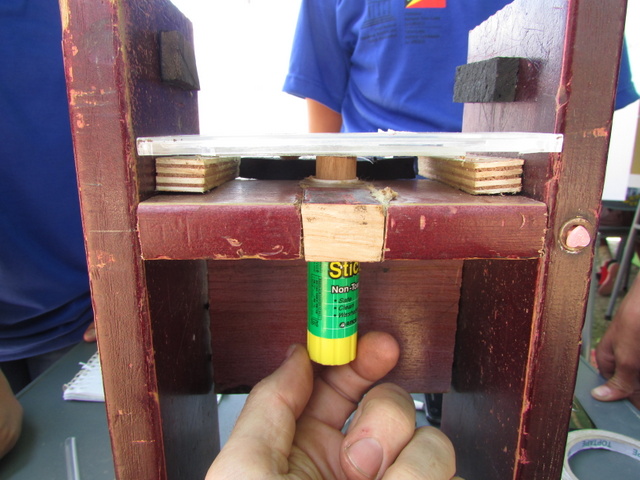
This is a remarkably ingenious method of focus for a smart-phone camera microscope: the twist retract of a glue stick. The dead ant pictured above is magnified through a tiny toy laser lens, and also the phone camera. The wood is recognizably taken from a broken school desk.
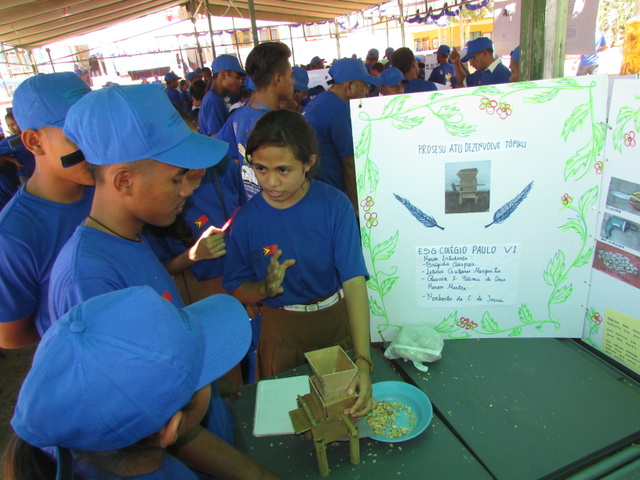
This automatic peanut shelling machine won the favorite prize from the local administrator.
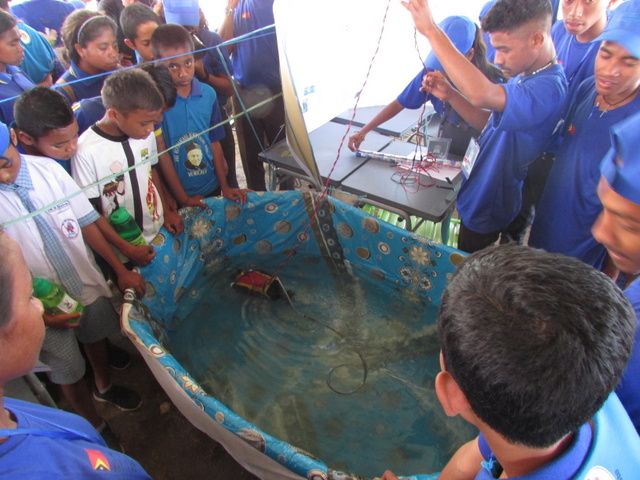
This group brought a submarine and a small tank for it all the way across the country. It lifted and sank when air was pumped into and out of an on-board balloon.
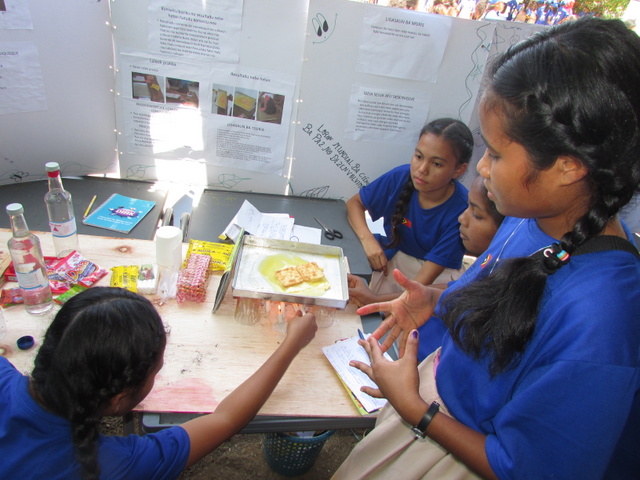
Here the earth’s crust is modeled with crackers sitting on hot margarine. The three basic types of tectonic plate boundaries were demonstrated. A model volcano also awaits out of site to the left.

These girls analyzed and documented the chlorine content of various types of locally available sanitary pads, as well as the results of too much of this chemical for the consumers. They won a favorite prize from UNESCO Jakarta.
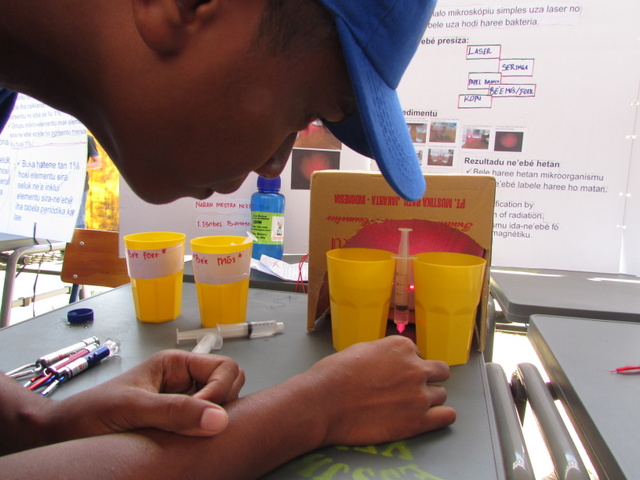
This ultra-simple version of the laser water-drop microscope also won a favorite prize.
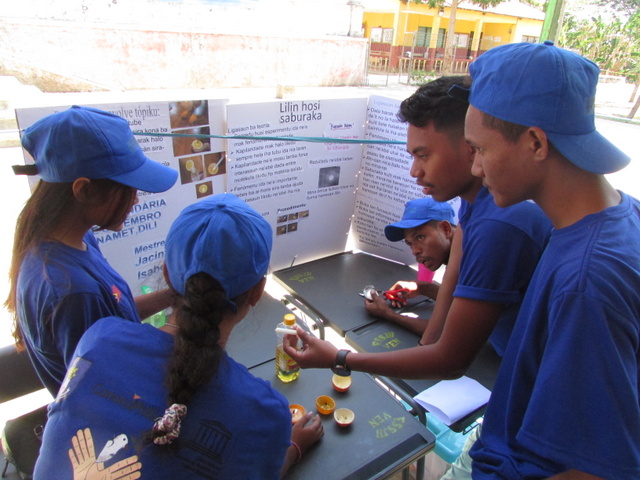
These students created oil lamps from half-eaten oranges.
After a massive lunch, the ceremony began, prizes were given to winning teams and schools, and special guests handed out additional favorite prizes.
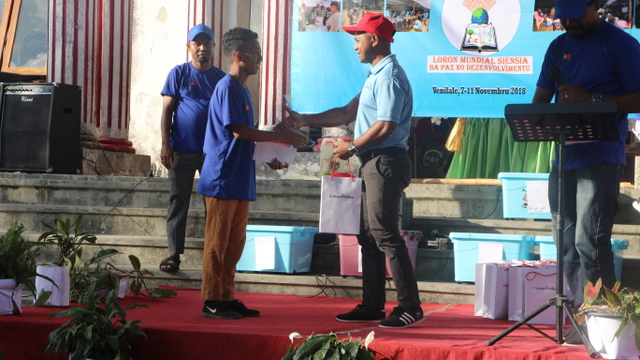
Three “Wow” demos were carried out by SESIM. First, a concrete filled soccer ball on a pendulum was released from a position touching the face of a physics teacher with his head back against a solid tank. The crowd shrieked as it swung away and then back again, stopping shortly before it smashed into his face. Fortunately, he believed in the principle of conservation of energy.
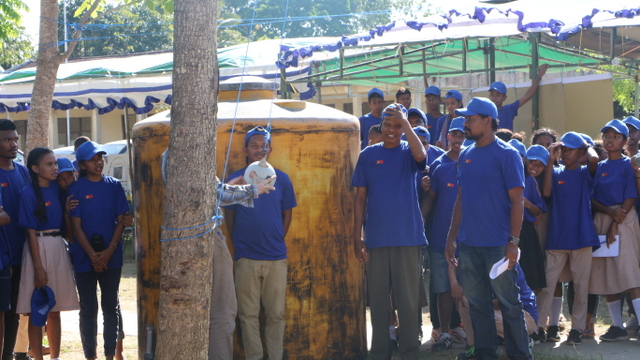
After that, 12 junior high students lifted a member of parliament on a modified chair with just their fingers, showing what happens when you divide a significant weight by 12. The parliament member, Ms. Maria Barreto, was not harmed, and promised to support SESIM activities in the future.
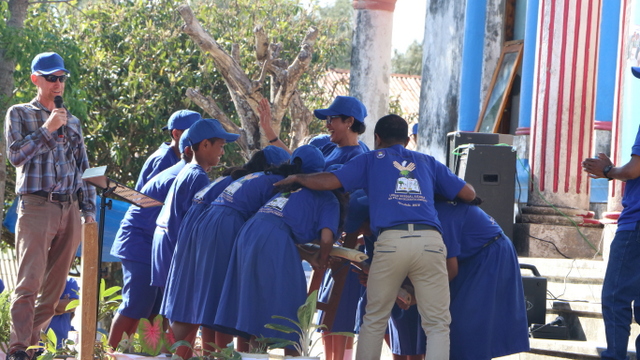
Finally, just in front of all the local and national officials, a half liter of petroleum freshly distilled from plastic garbage was added to the empty tank of Mestre Caetano’s motorcycle, which then roared to life and was driven away to thunderous applause.

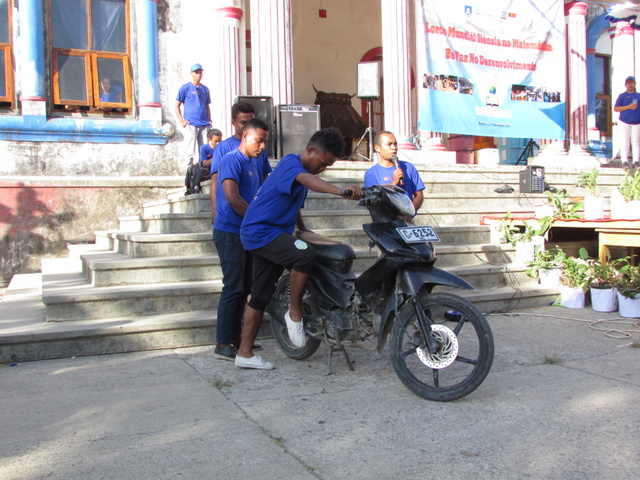
Cutting a giant cake brought the event to a close, but star gazing and other science activities with the local youth went on late into the evening.
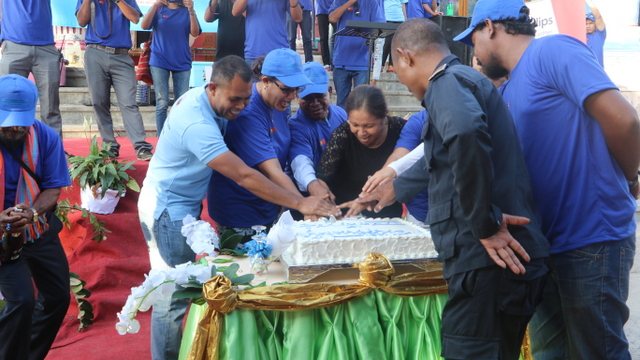
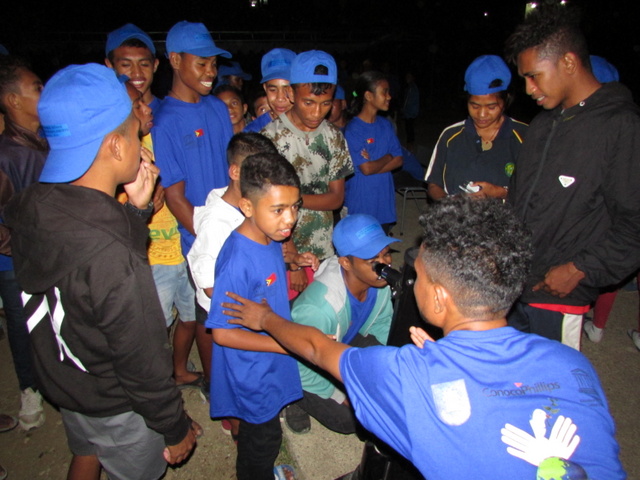
All in all, it was another fabulous event for SESIM and the students and teachers of Timor-Leste.
